This site contains affiliate links, view the disclosure for more information.
In this post, you will learn to use this interior design style guide to identify a style that reflects your unique self.
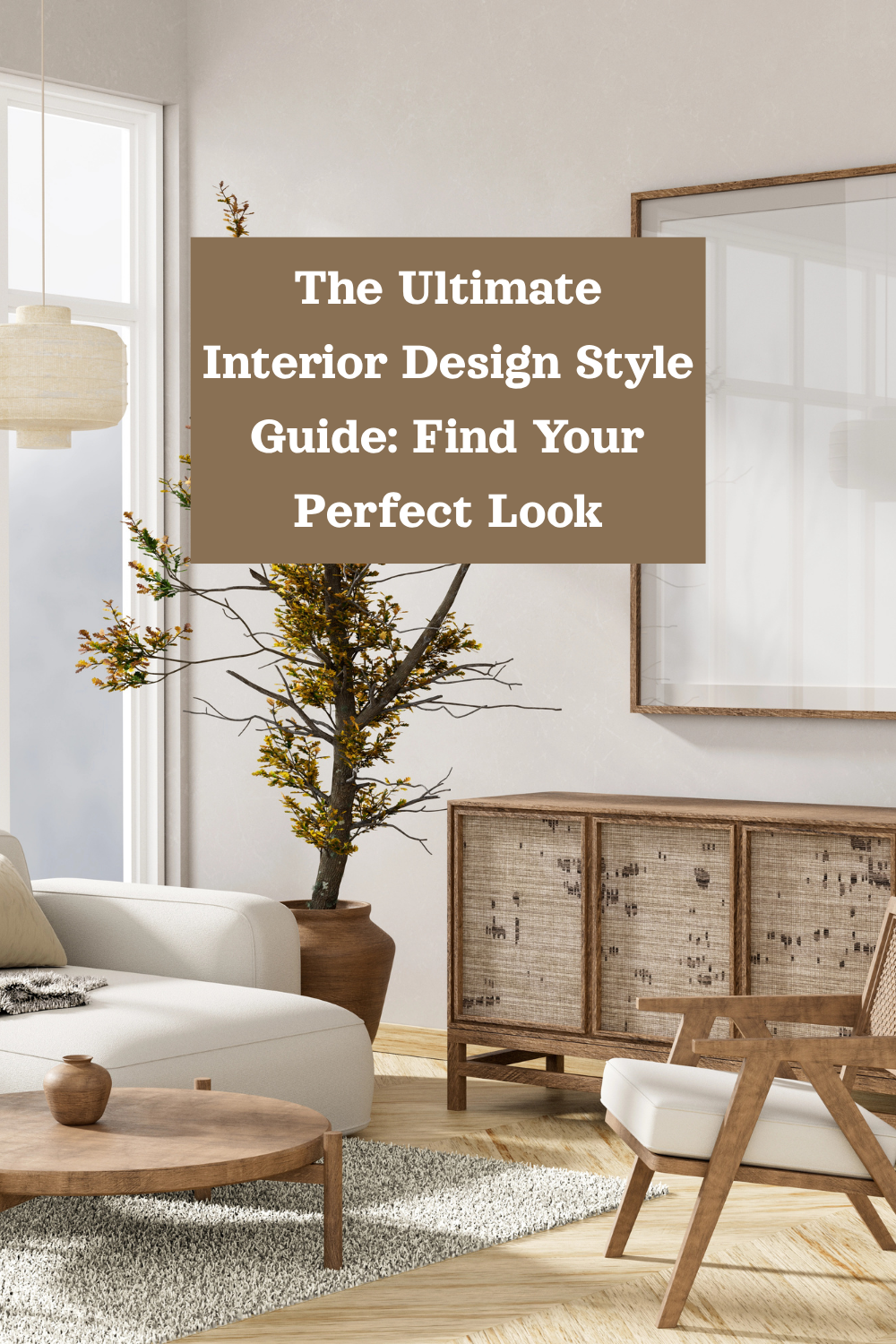
This interior design style guide aims to help you identify your decorating style so you can shop wisely for furniture and home decor accessories.
When you shop with intention, you will be guided in creating a space that reflects your unique self.
This post is about learning about the different interior design styles. It will help you identify your decorating style and achieve your desired look.
Your Ultimate Interior Design Style Guide
Mid Century Modern Interior
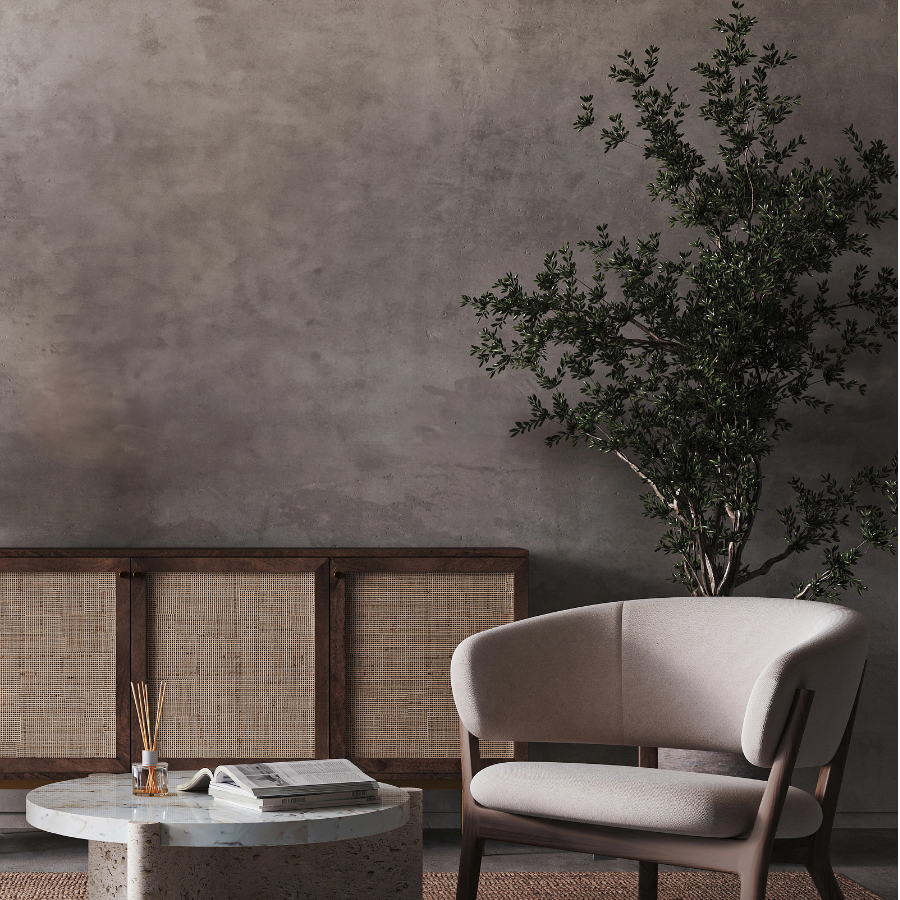
Do you want something similar?
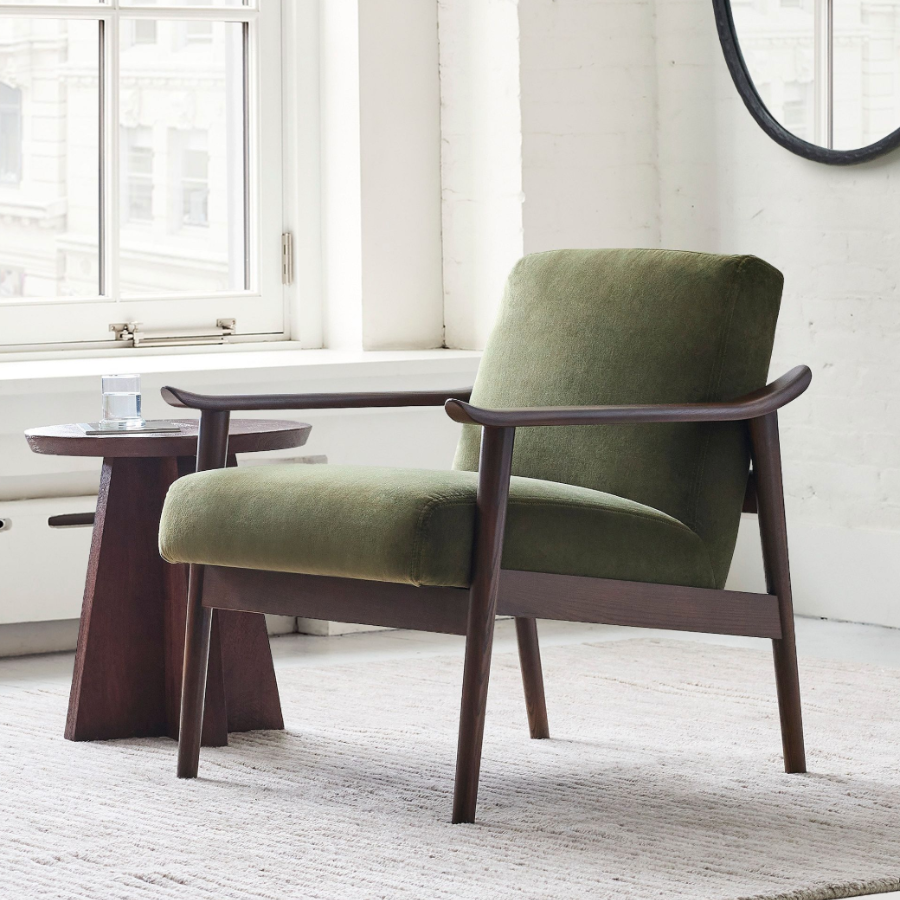
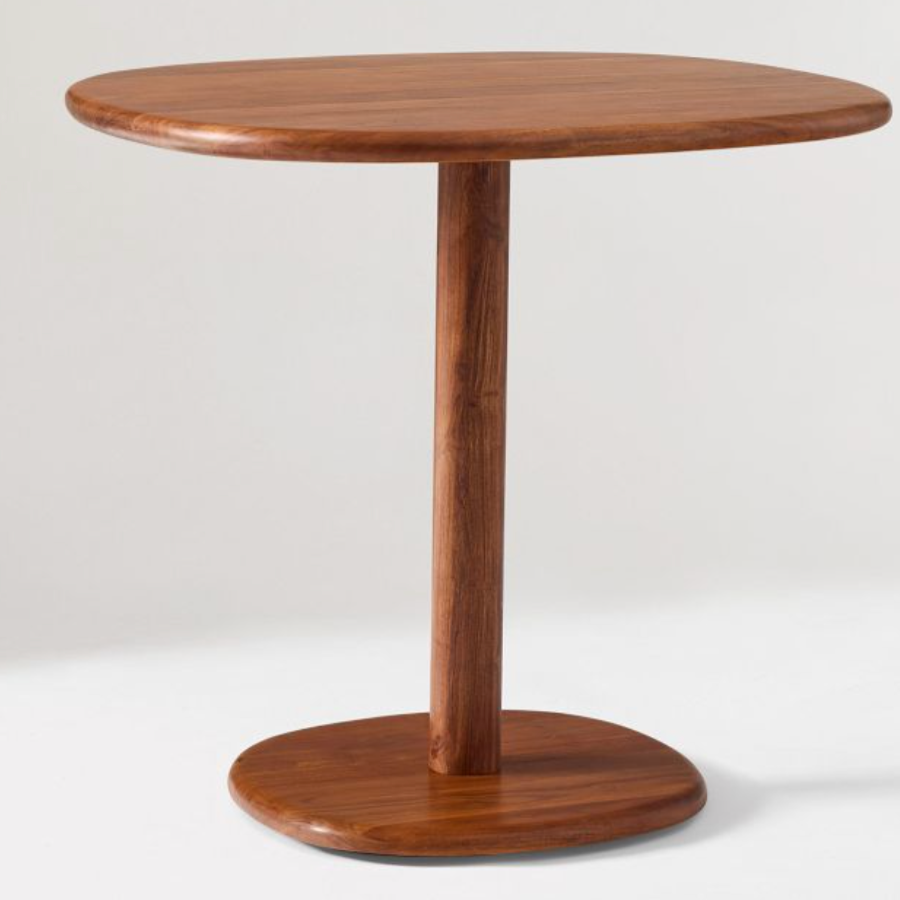
A clean, minimalist aesthetic focusing on functionality and an integration of nature characterizes mid-century modern interior design.
Because of its origin in the mid-20th century, particularly in the 1950s and 1960s, this style is known for its sleek lines, organic shapes, and innovative materials.
From this interior design guide, here are key elements used to create a mid-century modern interior design:
Clean Lines and Functional Forms:
- Clean, straight lines and gently curved organic shapes are core features.
- Furniture and architecture reflect simplicity and a no-frills design philosophy focused on practicality and beauty.
Natural Materials and Wood Tones:
- Natural wood, especially walnut, teak, and oak, is heavily used.
- These materials provide warmth and balance to the clean geometry of the furniture.
Retro Color Palettes:
- Color schemes often combine neutrals with pops of saturated color such as mustard yellow, burnt orange, olive green, and teal.
- These hues add visual interest without overwhelming the space.
Iconic Furniture Pieces:
- The style features legendary furniture designs, including Eames lounge chairs, Noguchi tables, and Tulip chairs, which are characterized by sculptural shapes and tapered legs.
- These pieces of furniture remain iconic in contemporary design today.
Minimal Decor Accents:
- Decor is kept minimal, favoring form and function over excessive decoration.
- Accessories are thoughtfully chosen and often include abstract art, geometric patterns, or sculptural objects.
Open Floor Plans and Large Windows:
- Spaces are designed to feel open and airy.
- Large windows and sliding glass doors invite natural light and connect the indoors with the outdoors, connecting the style’s emphasis on indoor-outdoor living.
Low-Profile Furniture:
- Furniture pieces tend to sit lower to the ground, with sleek silhouettes and open bases that give rooms a more spacious feel.
Statement Lighting:
- Lighting is a feature in its night—look for Sputnik chandeliers, floor lamps, and globe pendants, all contributing to the space’s modern aesthetic.
Geometric and Abstract Art
- Wall art typically includes bold, abstract shapes or geometric patterns, often in the same retro-inspired color palettes used throughout the space.
- Wall art typically includes bold, abstract shapes or geometric patterns, often in the same retro-inspired color palettes used throughout the space.
You can also purchase at:
- Wayfair
- West Elm
- Crate & Barrel
- CB2
Industrial Interior Style
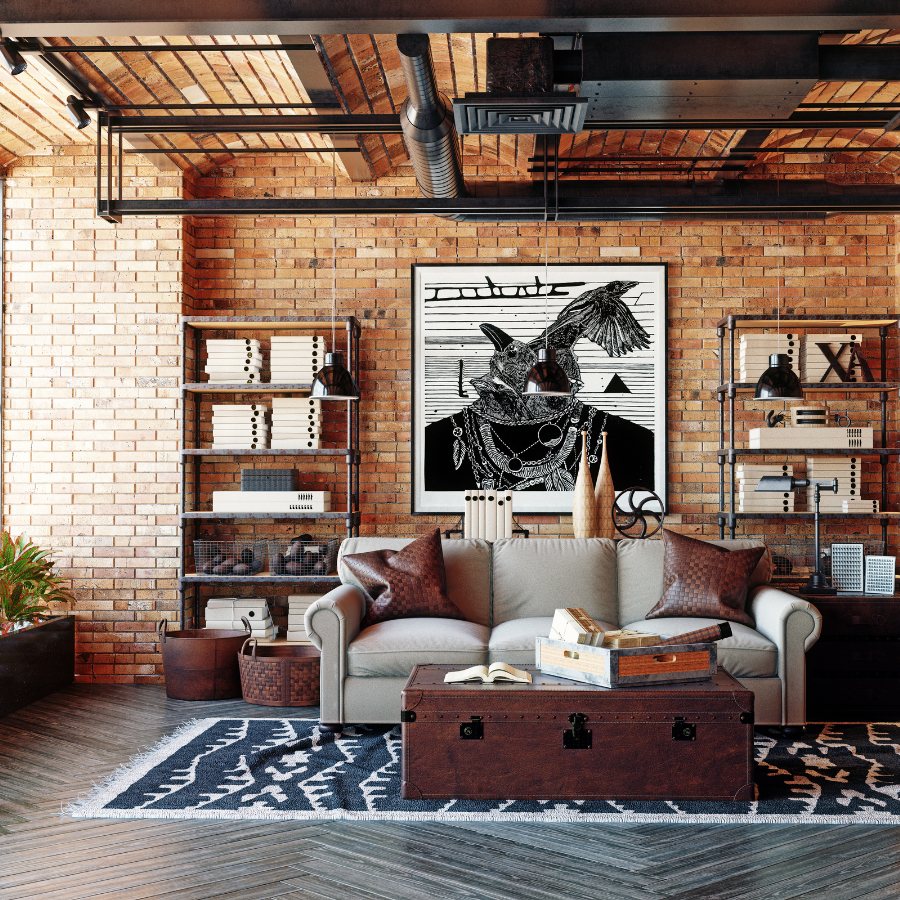
Do you want to explore something similar?
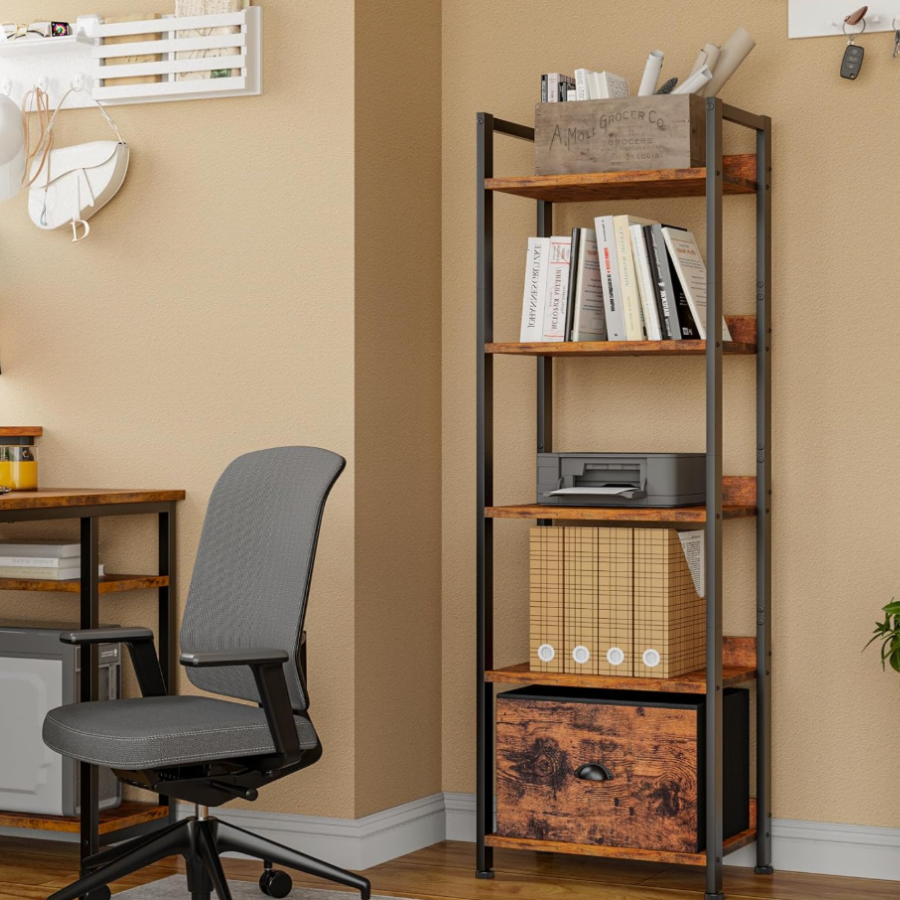
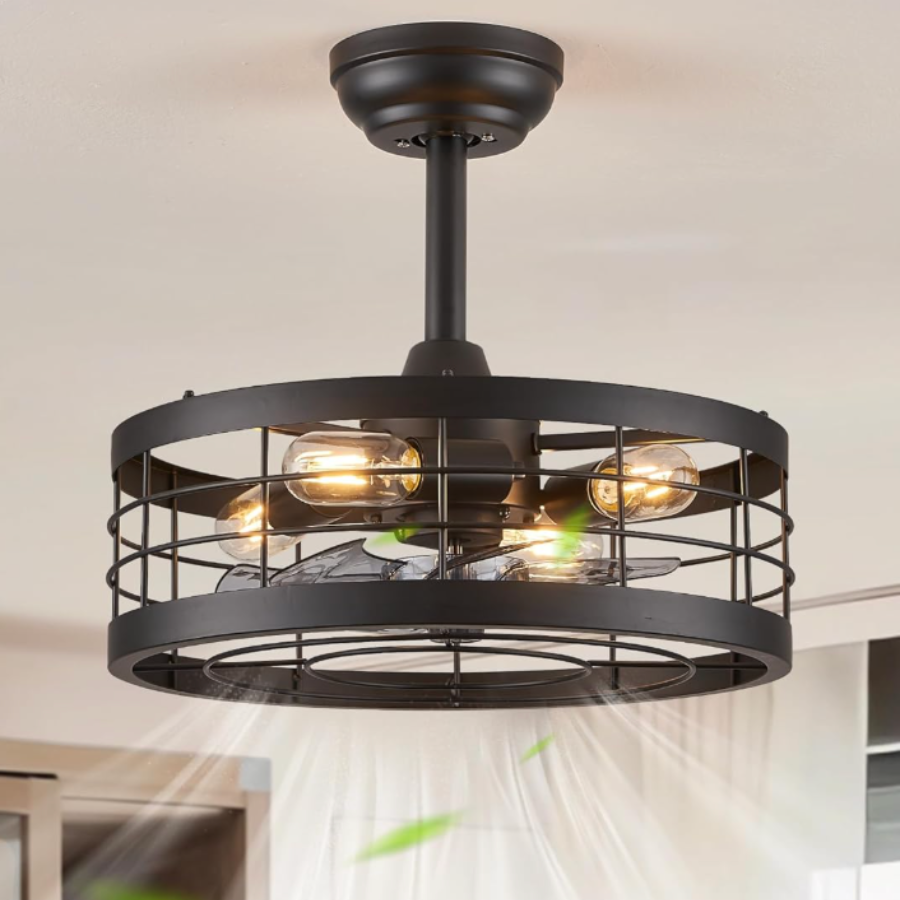
Industrial interior design draws inspiration from factories and warehouses’ raw, utilitarian aesthetics.
This style often emphasizes exposed structural elements, a mix of materials, and a rugged, unpolished look. Specifically, the interior design style guides critical components used to create an industrial interior design style:
Exposed Structural Elements:
- Exposed structural elements, such as beams, ductwork, and pipes, are one of the main characteristics of this design. Also, the industrial feature provides a sense of authenticity and a raw, unfinished look.
Raw Materials:
- Use raw and natural materials like brick, concrete, steel, and reclaimed wood.
- These materials contribute to the industrial aesthetic and showcase the building’s original features.
Open Spaces:
- Embrace open floor plans with minimal dividing walls.
- This creates a spacious, loft-like feel commonly associated with industrial interiors.
Concrete Floors:
- Opt for concrete floors or other industrial-looking flooring options like polished or stained concrete.
- These flooring choices are durable and enhance the industrial vibe.
Metal Accents:
- Incorporate metal elements like steel frames, iron railings, and metal light fixtures.
- Metal can add an edgy and valuable touch to the space.
Large Windows:
- Install large windows to maximize natural light and provide an open, airy atmosphere.
- Factory-style windows or steel-framed windows are standard in industrial design.
Vintage and Repurposed Furniture:
- Choose furniture with an industrial or vintage aesthetic.
- Pieces made from reclaimed wood or metal and furniture with a worn or distressed appearance fit well into industrial interiors.
Industrial Lighting:
- Select lighting fixtures with an industrial look, such as pendant lights with metal shades, Edison bulbs, or exposed bulb fixtures.
- Industrial lighting often serves as both a functional and decorative element.
Utilitarian Decor:
- Decorative items with a functional or factory-inspired design contribute to the industrial style. Examples include old factory gears, pulleys, and vintage signage.
Mechanical Details:
- Incorporate mechanical and functional details, such as exposed bolts, gears, and hardware, to enhance the industrial look.
Utilitarian Fabrics:
- Choose fabrics with a utilitarian feel, such as canvas, burlap, or leather.
- Such fabrics can be used for upholstery, throw pillows, or curtains, adding texture and authenticity to the space.
You can also purchase at:
- Wayfair
- West Elm
- Crate & Barrel
- CB2
Bohemian (Boho) Interior Design Style
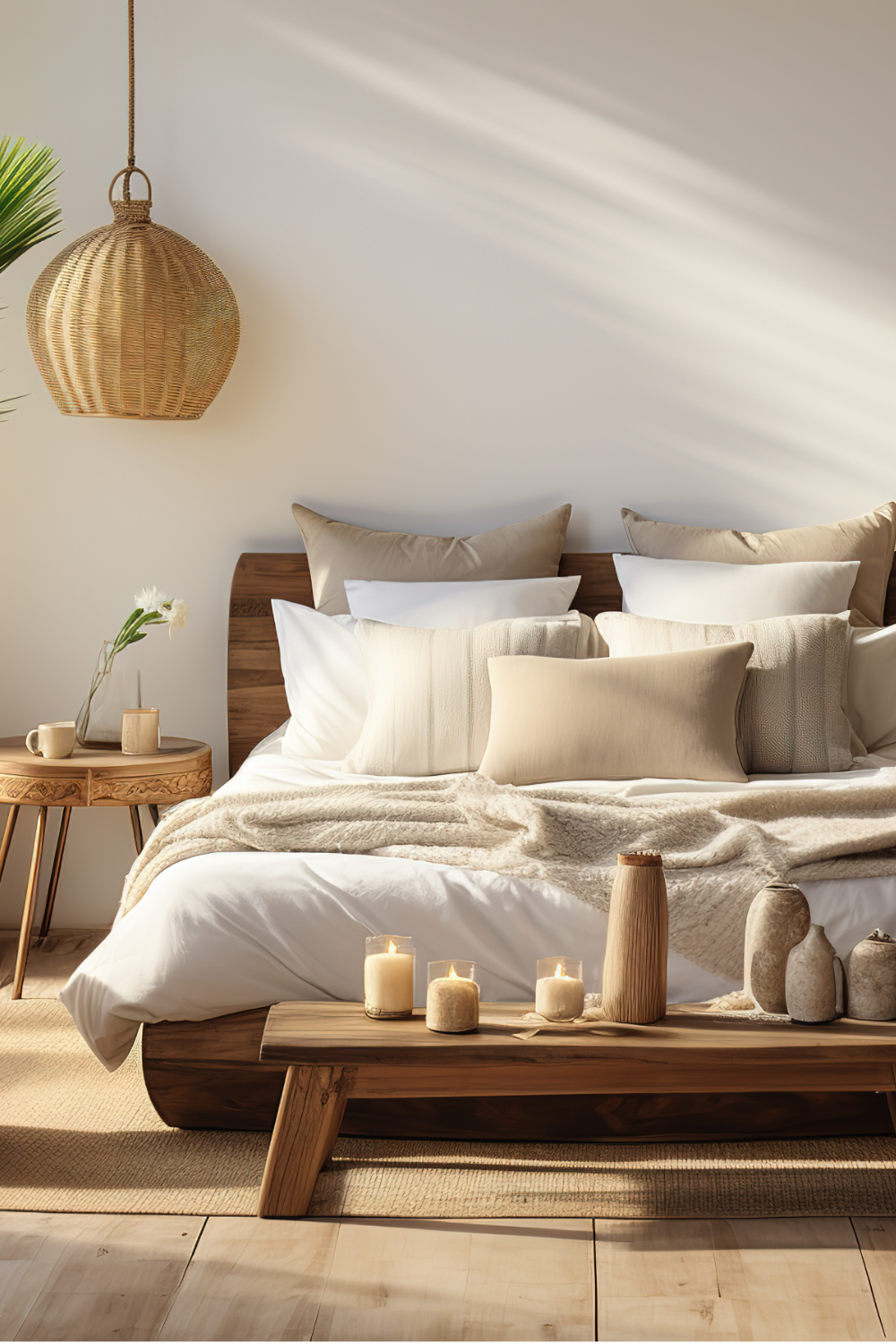
Do you want to see other boho accessories?
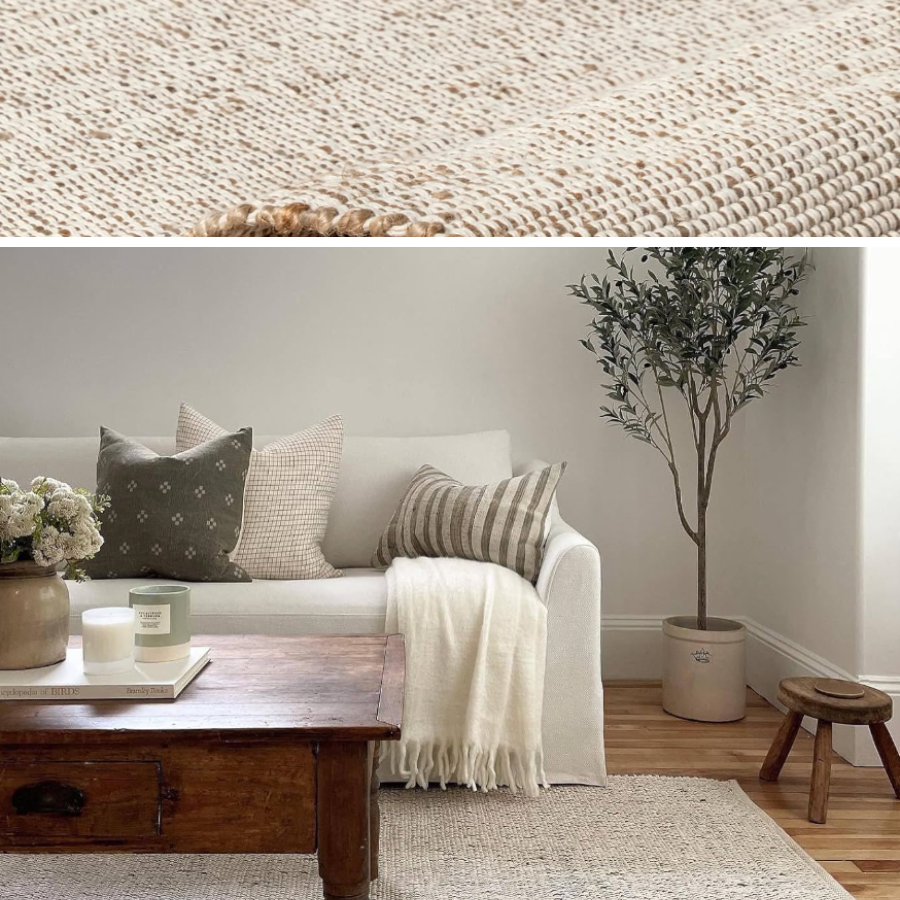
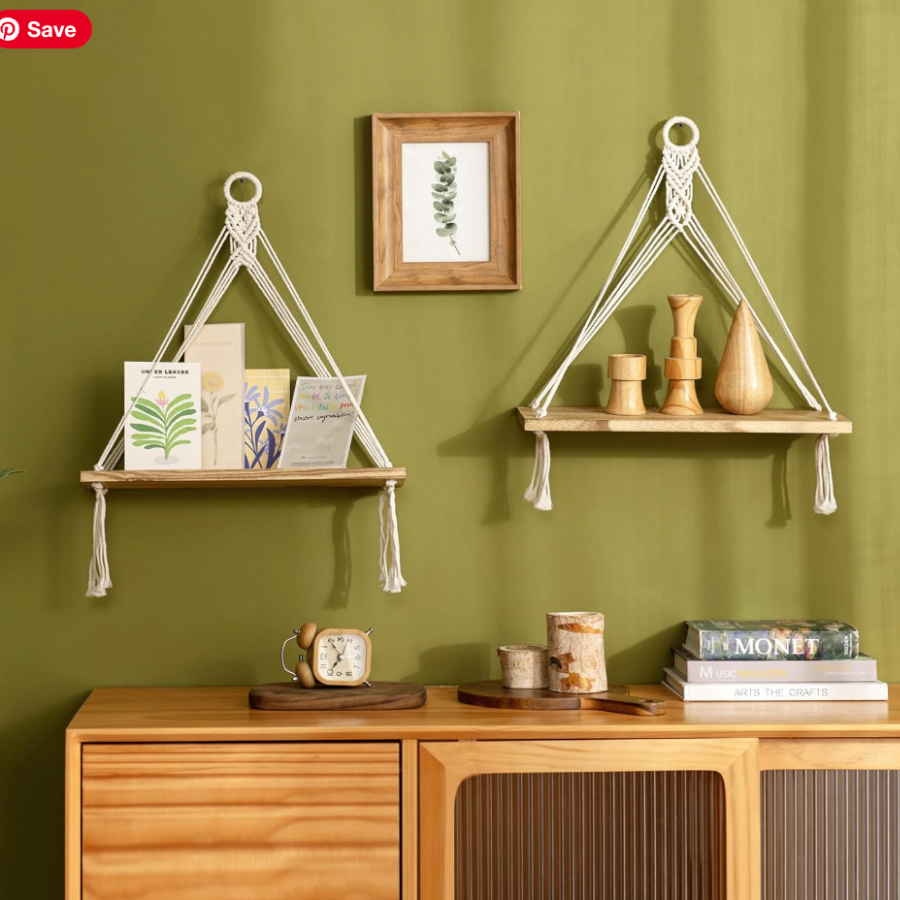
Bohemian, or Boho, interior design is a free-spirited, eclectic style that celebrates creativity, individuality, and global inspiration. It’s known for its layered textures, rich patterns, and earthy tones.
A Boho home feels warm, relaxed, and personal, filled with vintage finds, artisan-made decor, and lots of plants and natural materials like rattan and jute. There are no strict rules — mismatched furniture, colorful textiles, and globally inspired accessories are all welcome. This style invites self-expression and storytelling through decor, making it perfect for those who value comfort, culture, and curated chaos.
Color Palette:
- Use earth tones, warm neutrals, jewel tones (rust, ochre, turquoise, and deep greens).
Key Features:
- Boho homes are free-spirited, with layered textures, global influences, and a relaxed and unstructured feel.
Materials:
- Materials are rattan, cane, jute, macrame, linen, leather, and reclaimed woods.
Streamlined and Elegant Furniture:
- Shop lower to the floor, vintage, eclectic mix, often floor cushions, poufs, and hammocks.
Decorative Elements:
- Such as, houseplants, fringe, tapestries, textiles from around the world, lanterns, and beaded decor.
Patterns & Textiles
- Kilims, Moroccan prints, tie-dye, Persian embroidery, and mixed patterns.
Lighting
- Use layered lighting: lanterns, string lights, woven pendants, and colored glass.
Art & Accessories
- Gallery walls, woven wall hangings, handmade pottery, crystals, and vintage books.
Common Spaces
- Cozy reading nooks, floor seating areas, layered bedding, and inviting lounges.
Mood
- Warm, lived-in, personal, relaxed, creative, and deeply expressive.
You can also purchase at:
- Wayfair
- West Elm
- Etsy
- CB2
Scandinavian Interior Style
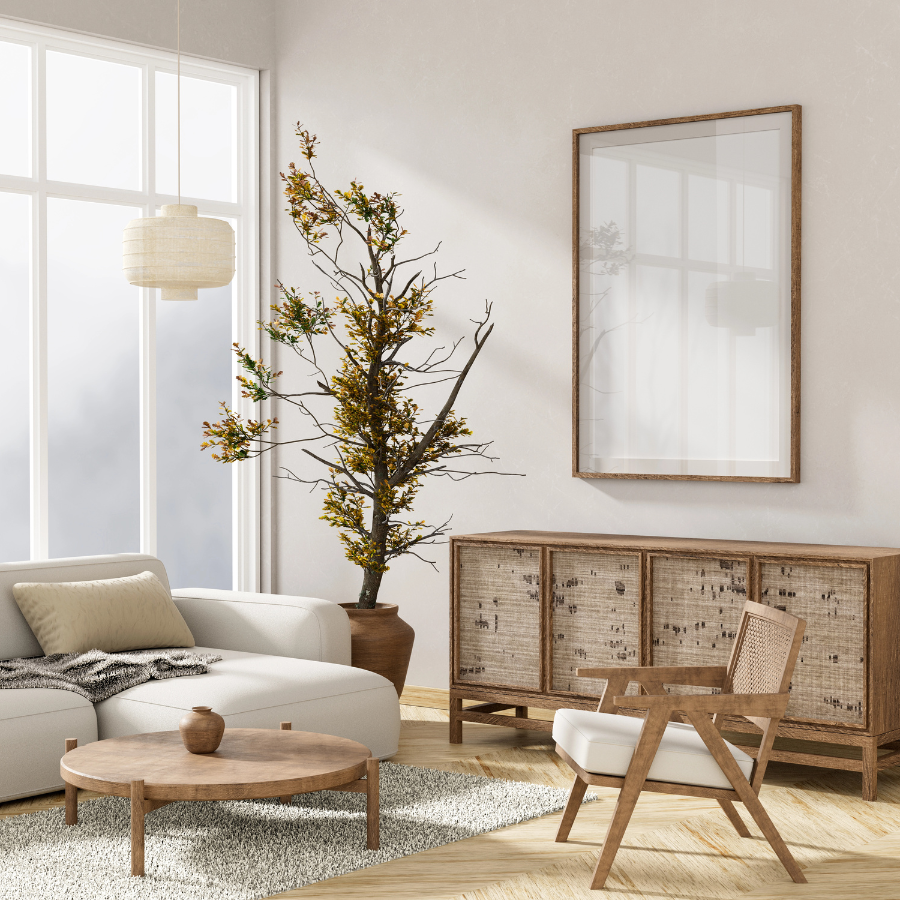
Do you want something similar?
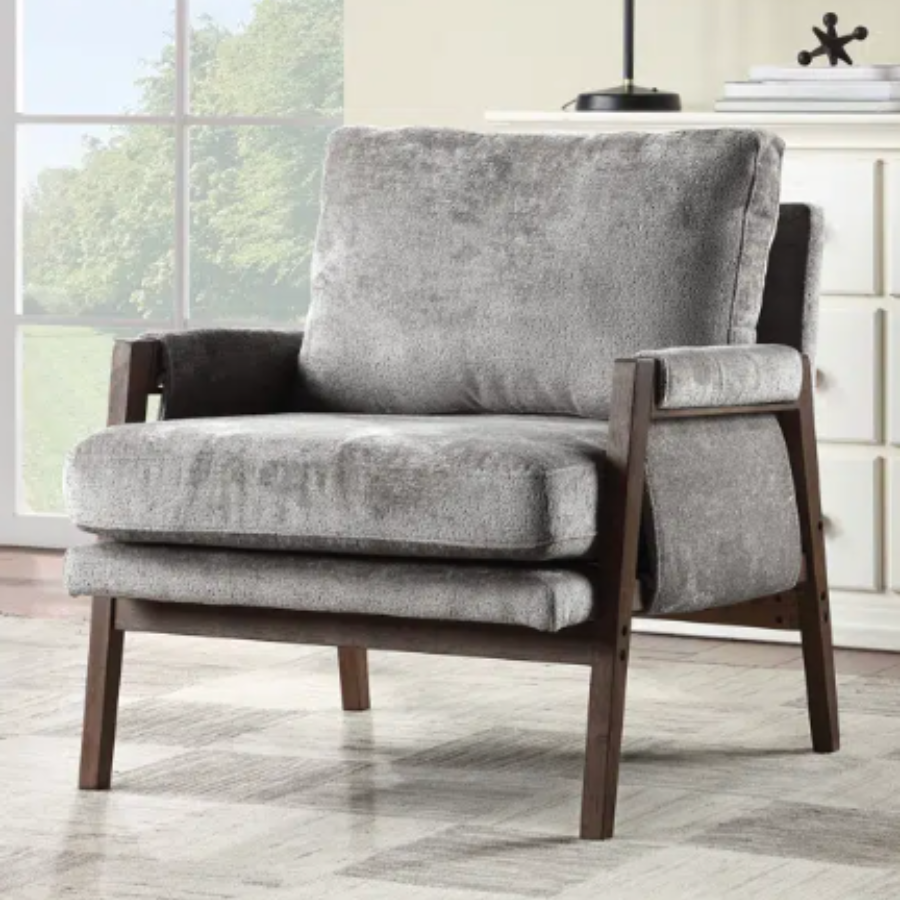
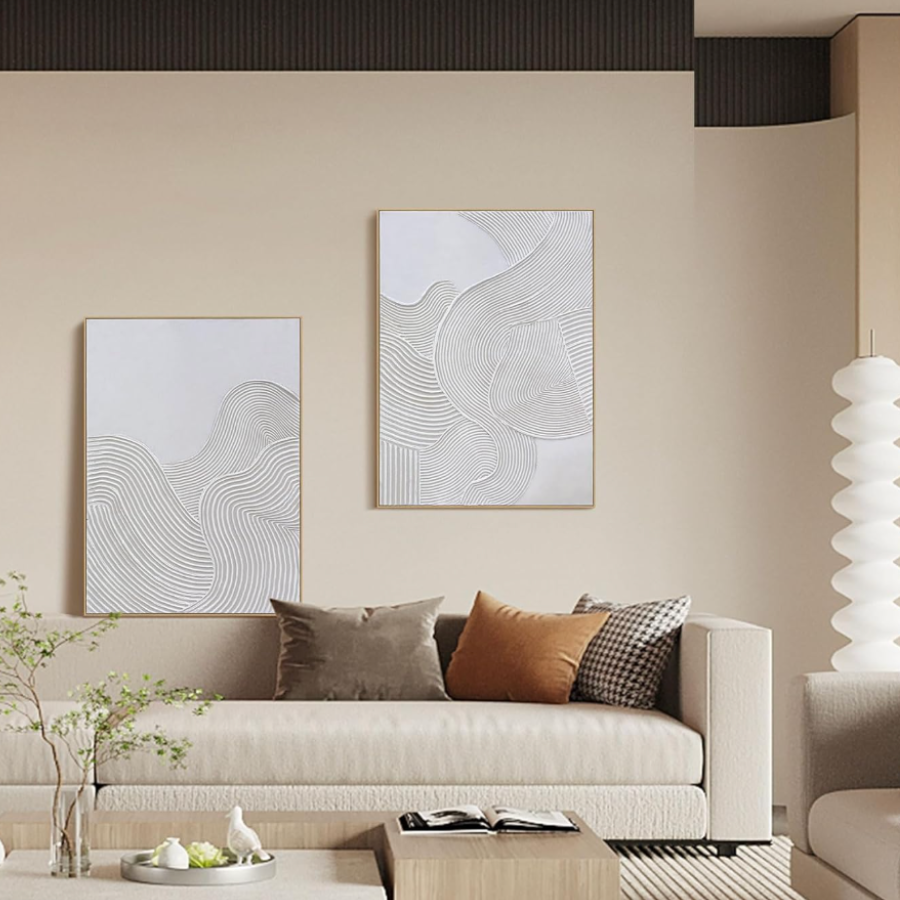
Scandinavian interior design embodies simplicity, functionality, and minimalism, rooted in the Nordic countries’ lifestyle and climate. The design emphasizes natural elements, light, and clean lines to create a cozy yet uncluttered atmosphere.
From this interior design style guide, there are some key elements used to create a Scandinavian interior design:
Light and Airy Color Palette
- Use a neutral, light-based color scheme dominated by whites, soft grays, pale blues, and beige tones.
- These colors help brighten the space during long Nordic winters and give rooms a fresh, open feel.
Natural Materials:
- Incorporate organic materials such as light-toned woods (pine, ash, birch), wool, linen, leather, and sheepskin.
- These natural textures add warmth and tactile comfort to the clean design.
Functional and Minimal Furniture:
- Choose furniture with clean lines, simple silhouettes, and a focus on practicality.
- Multi-functional pieces and sleek wood furnishings reflect the style’s emphasis on usability and comfort.
Ample Natural Light:
- Prioritize natural light by using sheer curtains or none at all.
- Large windows, white walls, and reflective surfaces help maximize light and keep spaces bright and airy.
Hygge-Inspired Comfort:
- Layer cozy textiles like knitted throws, soft cushions, and area rugs to create a warm, inviting ambiance.
- This adds to the concept of hygge, the Danish idea of coziness and well-being.
Clutter-Free Spaces:
- Maintain open, organized rooms with minimal decorative accessories.
- Storage solutions are often built-in or concealed to keep spaces feeling tidy and serene.
Greenery and Indoor Plants:
- Add indoor plants like rubber trees, fiddle leaf figs, or hanging greenery for a natural accent.
- Plants enhance well-being and contribute to the light, organic look of Scandinavian interiors.
Simple Decorative Accents:
- Opt for minimalist decor—think line art, monochrome prints, ceramic vases, or natural wood accents.
- Avoid overly ornate or bold decor that clashes with the calm, clean aesthetic.
Light Wood Flooring:
- Use pale or whitewashed hardwood floors to maintain the bright, uncluttered look.
- Avoid wall-to-wall carpets—area rugs are preferred for warmth and layering.
Modern Lighting Fixtures:
- Include simple pendant lights, wall sconces, or floor lamps with sleek designs.
- Lighting should be practical yet stylish, often featuring natural finishes or matte metals.
You can also purchase at:
- Hernest
- West Elm
- Arhaus
- CB2
Modern Farmhouse Interior Style
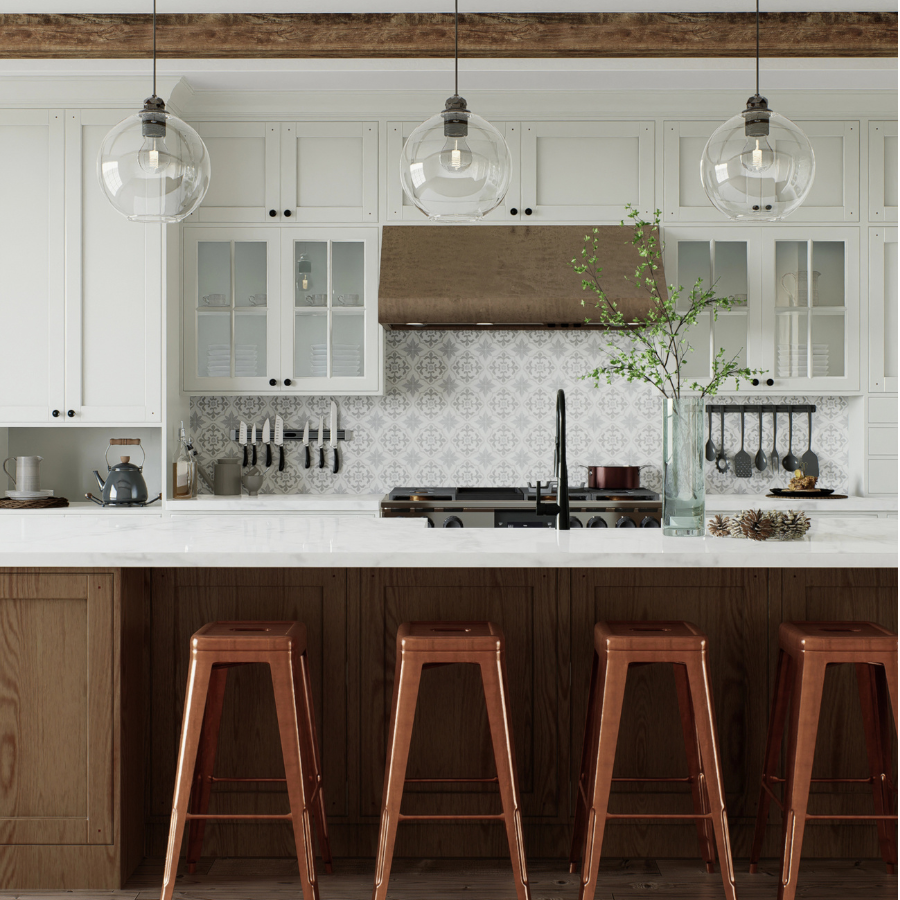
Would you like to explore other Modern Farmhouse accessories?
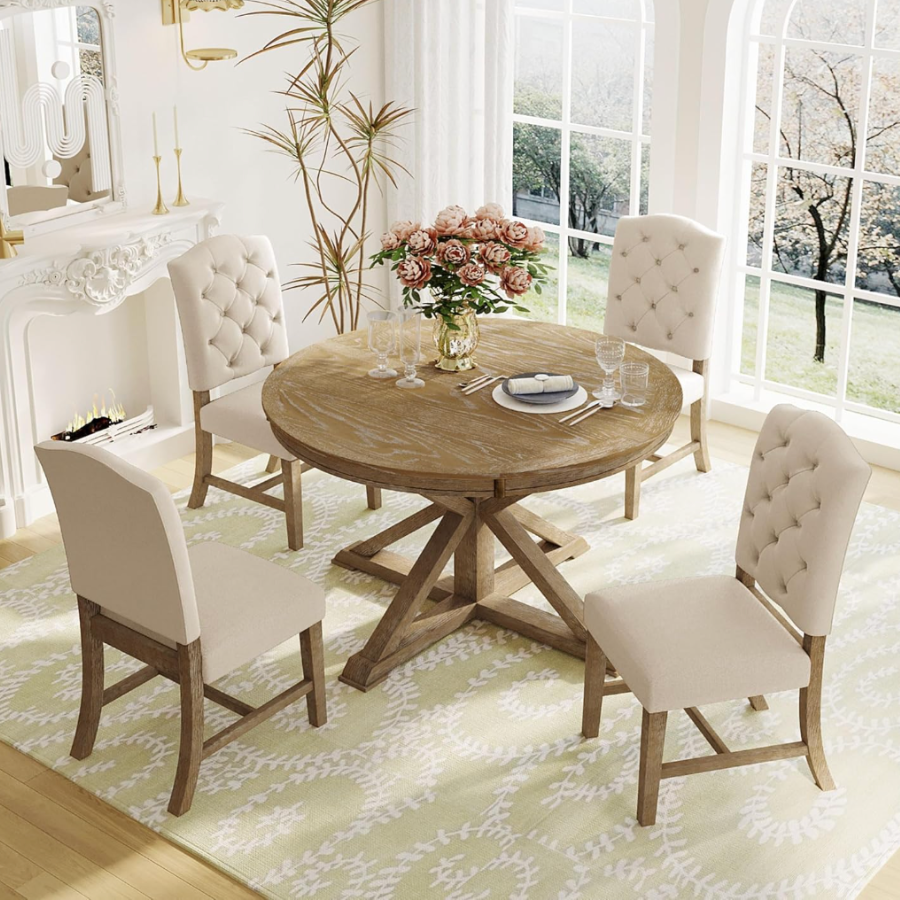
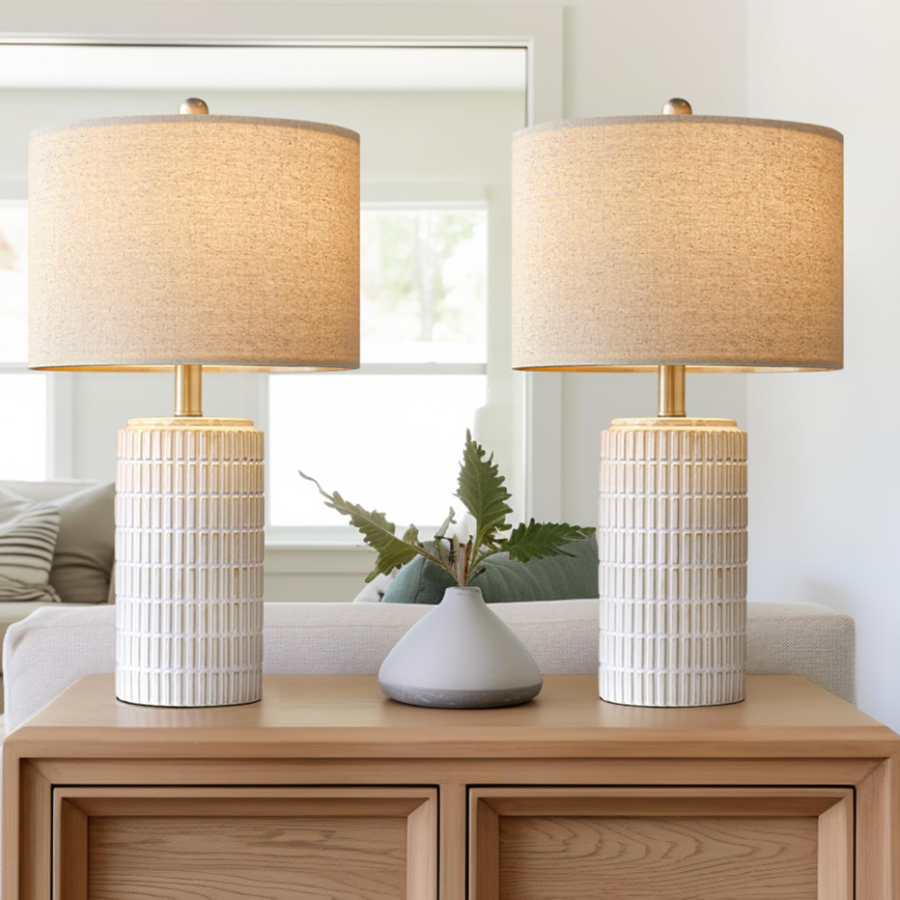
Modern Farmhouse is a warm, inviting blend of contemporary minimalism and rustic charm. This style takes the best of classic country farmhouse aesthetics—like weathered woods, shiplap walls, and cozy textiles—and updates it with clean lines, neutral palettes, and streamlined decor. The result is a timeless, comfortable, and functional living space that feels both lived-in and refined.
Rooted in simplicity and practicality. Modern Farmhouse embraces natural materials, muted tones, and vintage-inspired accents, while staying fresh with contemporary touches like matte black fixtures, industrial lighting, and sleek silhouettes. It’s a style that’s perfect for those who love the coziness of a traditional home but crave the polish of contemporary design.
From this interior design style guide, there are some key elements used to create a Modern Farmhouse interior design:
Neutral Color Palette:
- Modern farmhouse interiors feature a soft, neutral palette—think whites, creams, grays, and greiges, which blends the neutral tones of grays and beiges, creating a warm color palette.
- These neutral tones create a clean, calming backdrop that highlights natural textures and materials.
Natural Materials:
- Wood is a key material, especially in flooring, beams, and furniture.
- Look for wide plank hardwood floors, reclaimed wood accents, and furniture with natural finishes.
- Layer stone, linen, and jute for added warmth.
Shiplap and Wood Paneling:
- Shiplap walls or ceilings are signature farmhouse elements.
- Shiplap elements add a subtle texture and a sense of history while maintaining a fresh and modern appeal.
Black Accents:
- Matte black hardware, light fixtures, and metal accents provide a bold contrast to the light, neutral palette.
- These touches bring a modern edge to the rustic setting.
Open Shelving and Built-ins:
- Kitchen and living spaces often include open wood shelving, built-in storage units, and functional displays.
- Open shelving and built-ins promote an open, airy feel and let personality shine through curated decor.
Farmhouse Sink and Apron Front Details:
- In kitchens, the classic farmhouse sink—with an apron front—adds vintage charm and practicality.
- It’s often paired with subway tile backsplashes and butcher block or stone countertops.
Cozy Textiles:
- Incorporate soft, layered textiles like hunky knit throws, ticking stripe pillows, and linen drapery
- These elements make the space feel welcoming and lived-in.
Mixed Metals:
- Mixing metals—such as brushed nickel, antique brass, and black iron—adds visual interest while maintaining a balanced, curated look.
Statement Lighting:
- Oversized lanterns, wrought iron chandeliers, and sconces with farmhouse or industrial flair help define the space while providing a warm atmosphere.
Vintage and Repurposed Decor:
- Antique market finds, barn-style doors, old crates, and architectural salvage pieces contribute character and authenticity.
You can also purchase at:
- Wayfair
- Hernest
- Arhaus
- CB2
Traditional Interior Design Style
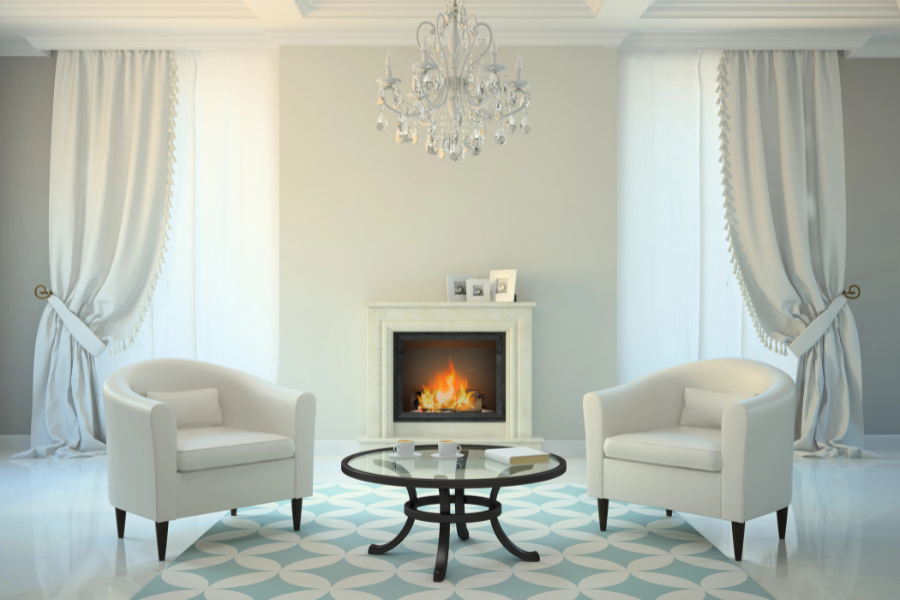
Would you like to explore other traditional furniture pieces and accessories?
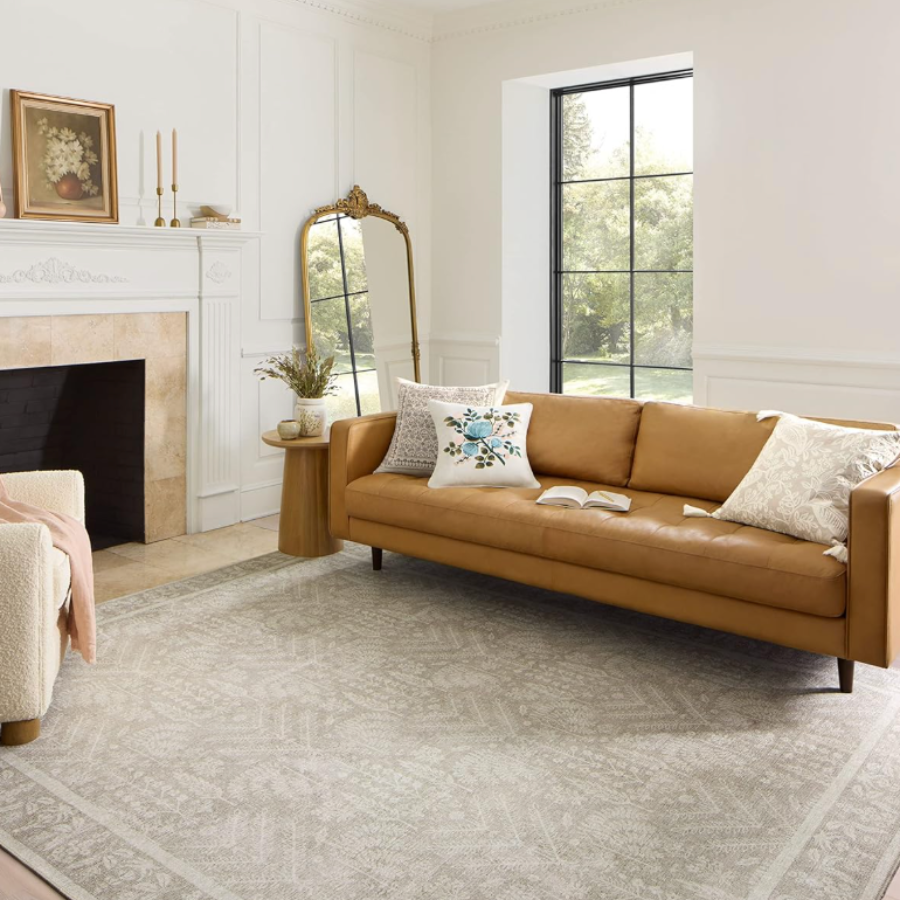
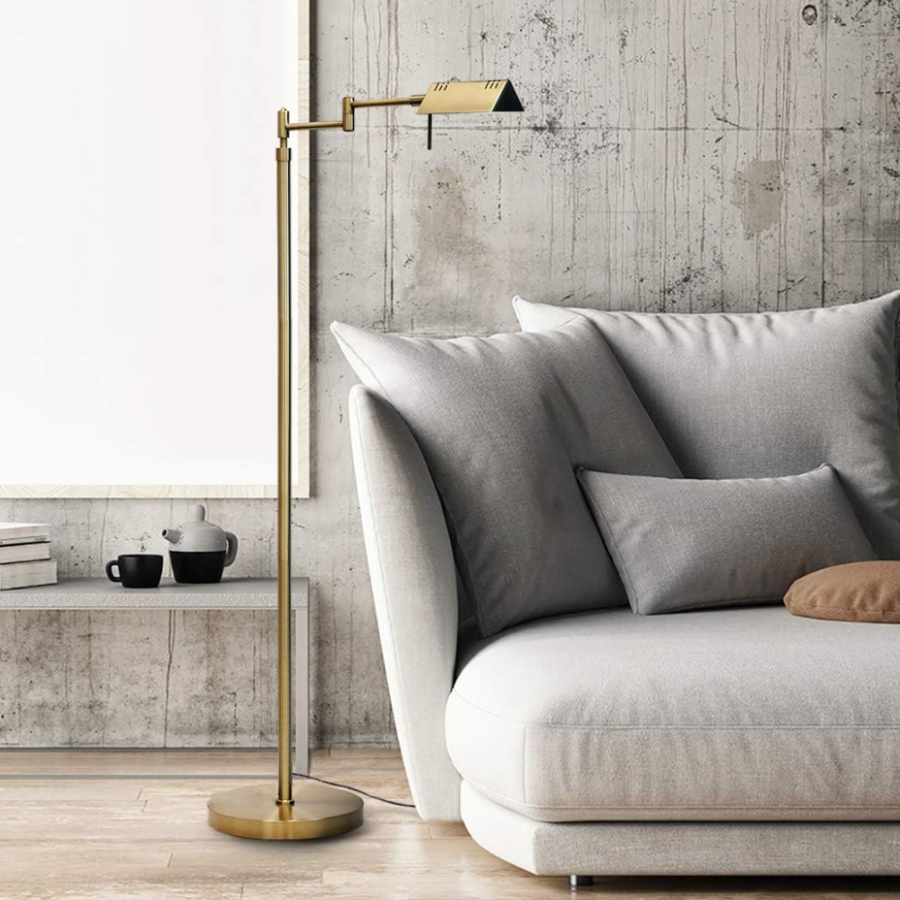
Traditional interior design is characterized by a classic and timeless aesthetic that draws inspiration from various historical periods. It often features elegant furnishings, rich colors, and ornate details.
In this interior design guide are some key elements commonly used to create a traditional interior design style:
Classic Furniture:
- Traditional interiors showcase furniture with timeless designs. This may include pieces with intricate woodwork, curved lines, and detailing such as claw feet or cabriole legs.
- Wingback chairs, camelback sofas, and Chippendale or Queen Anne-style furniture are ordinary.
Rich Materials:
- Traditional design favors high-quality materials like wood, leather, and silk.
- Dark woods like mahogany, cherry, and walnut are often used for furniture, while luxurious fabrics like damask, brocade, and velvet are chosen for upholstery.
Antique and Reproduction Pieces:
- Incorporating antique furniture or high-quality reproductions is a crucial characteristic of traditional interiors. These pieces contribute to the sense of history and craftsmanship.
Formal Window Treatments:
- Draperies, valances, and curtains with elaborate patterns or luxurious fabrics are typical in traditional design.
- They often feature pleats, tassels, or fringe details.
Symmetry and Balance:
- A sense of balance and symmetry characterizes traditional interiors.
- Matching pairs of furniture, accessories, and artwork contribute to a harmonious and orderly look.
Classic Patterns:
- Traditional design often incorporates classic patterns such as florals, stripes, damask, and plaids.
- These patterns are used in upholstery, drapery, and wallpaper to add visual interest.
Warm Color Palette:
- Traditional color schemes are generally warm and inviting. Earthy tones, deep reds, rich greens, and warm neutrals create a cozy and timeless atmosphere.
Molding and Millwork:
- Architectural details, including crown molding, chair rails, and wainscoting, are common in traditional interiors.
- These details add a sense of refinement and craftsmanship to the space.
Chandeliers and Elegant Lighting:
- Traditional interiors often feature ornate chandeliers and sconces.
- Lighting fixtures can be made of crystal, brass, or other high-quality materials, serving as focal points in the room.
Traditional Rugs:
- Oriental or Persian rugs with intricate patterns and rich colors are popular for traditional interiors.
- Rugs add warmth and sophistication to the space.
Classic Artwork and Portraits:
- Traditional interiors often include artwork with classic themes, such as landscapes, still life, or portraits.
- Gilt frames and traditional art pieces contribute to the overall elegance.
Formal Dining Sets:
- Traditional dining rooms typically feature formal dining sets with matching chairs and a coordinating table. China cabinets or buffets may be used to display fine china or silverware.
Fireplaces and Mantels:
- If the space allows, traditional interiors often include a fireplace with a mantel.
- The mantel may serve as a focal point and allow the display of decorative items.
You can also purchase at:
- Wayfair
- West Elm
- Hernest
- CB2
Japandi Interior Design Style
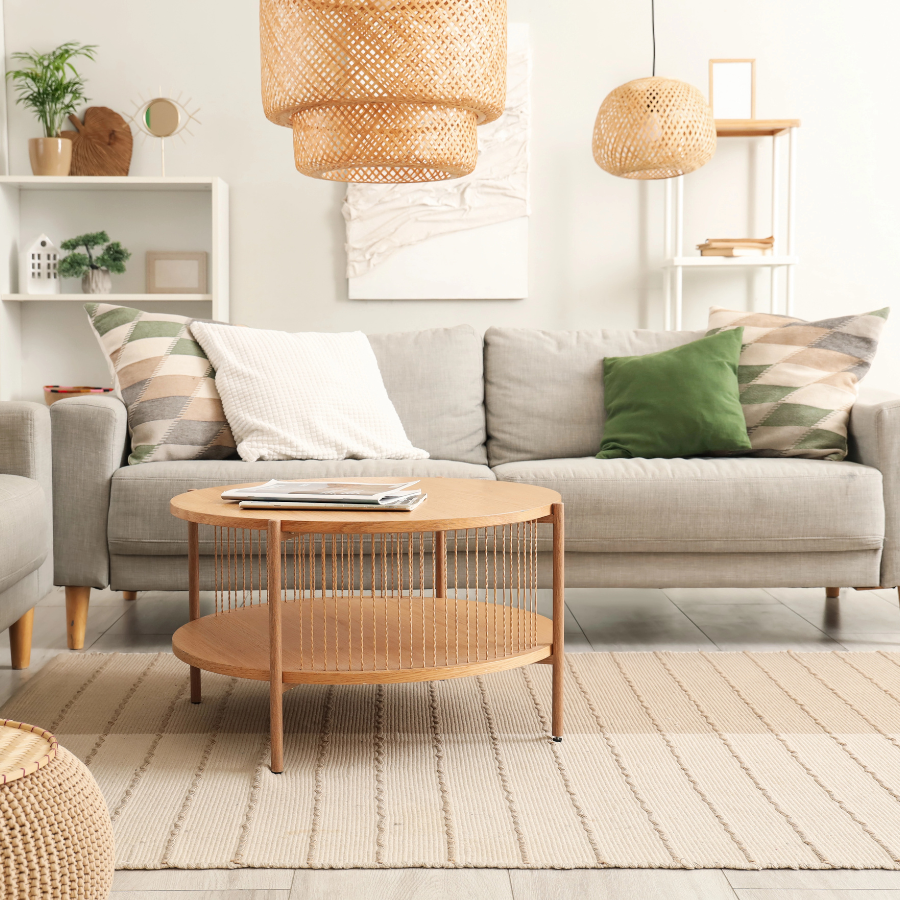
Would you like to explore other accessories?
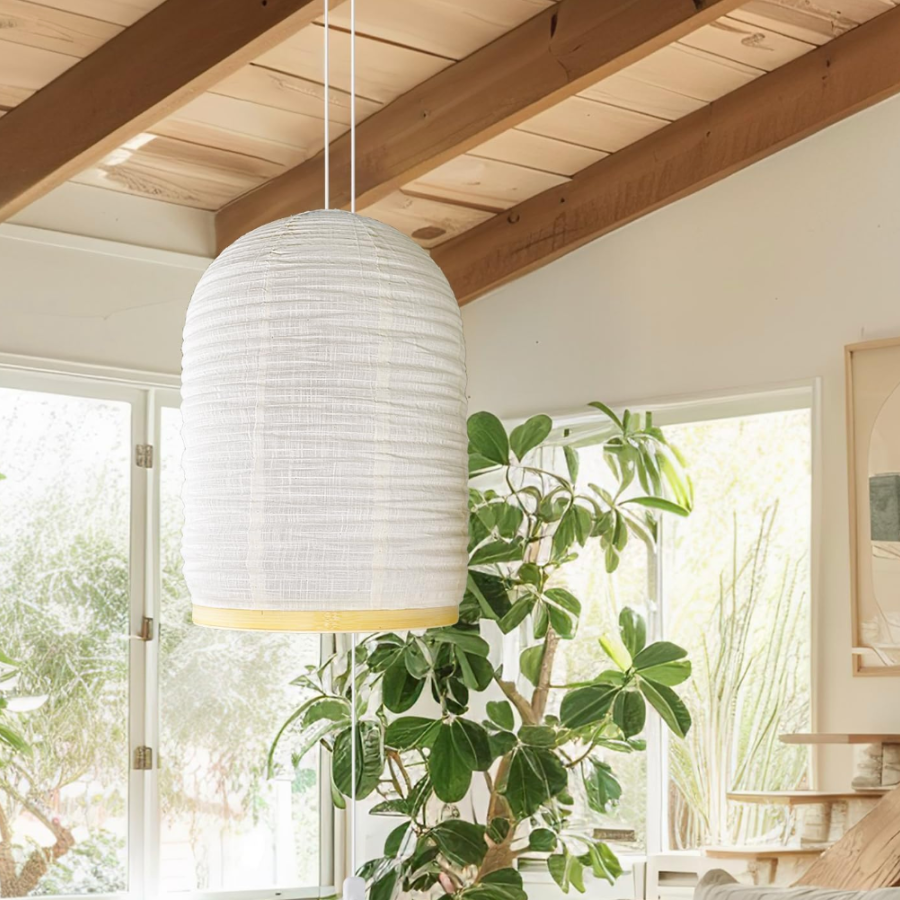
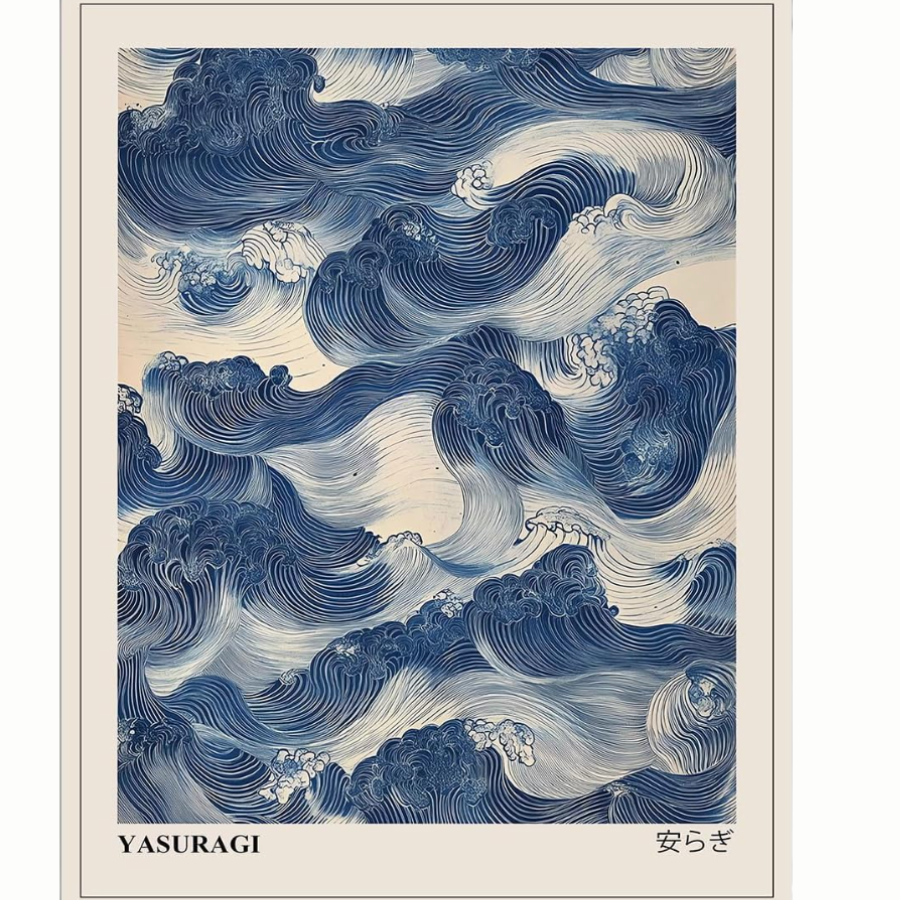
Japandi interior design is a harmonious blend of Japanese minimalism and Scandinavian functionality, resulting in a style that’s calm, intentional, and grounded in nature. It emphasizes simplicity, craftsmanship, and a sense of well-being through thoughtful design.
From this interior design style guide, there are some key elements used to create a Japandi interior design:
Minimalist Aesthetic:
- Japandi spaces are uncluttered, with a focus on essential and purposeful design.
- Negative space is embraced to create a serene and visually calm environment.
Natural Materials:
- Use natural and sustainable materials like light woods, bamboo, rattan, stone, and line.
- These materials promote warmth and a tactile connection to nature.
Earthy Color Palette:
- Colors are inspired by nature: soft neutrals, warm beiges, charcoal, muted greens, taupe, and off-white.
- This palette reinforces the peaceful atmosphere typical of Japandi interiors.
Low-Profile Furniture:
- Furniture is typically low-slung and simple, following clean lines and organic shapes.
- Both Japanese and Scandinavian influences favor pieces that are close to the ground for a grounded, peaceful feeling.
Craftsmanship and Quality:
- Emphasis is placed on craftsmanship over quantity.
- Every piece should feel purposeful and well-made, often with artisanal or handmade qualities.
Functional Layouts:
- Spaces are highly functional and arranged to promote flow and tranquility.
- Furniture and decor are thoughtfully placed to avoid visual clutter
Textural Contrast:
- Though minimal, Japandi interiors incorporate texture through woven materials, matte finishes, natural textiles, and handmade ceramics to add visual interest.
Soft Lighting:
- Lighting is subtle and calming.
- Using paper lanterns, floor lamps with fabric shades, or minimal pendant lights that create warm ambient lighting without harsh glare.
Wabi-Sabi Philosophy:
- Incorporate the Japanese concept of wabi-sabi, which celebrates imperfection and the beauty of natural aging.
- Decor may include slightly worn finishes or uneven ceramics to reflect this.
Greenery:
- Incorporate the Japanese concept of wabi-sabi, which celebrates imperfection and the beauty of natural aging.
- Decor may include slightly worn finishes or uneven ceramics to reflect this.
You can also purchase at:
- World Market
- Etsy
- CB2
Eclectic Interior Style
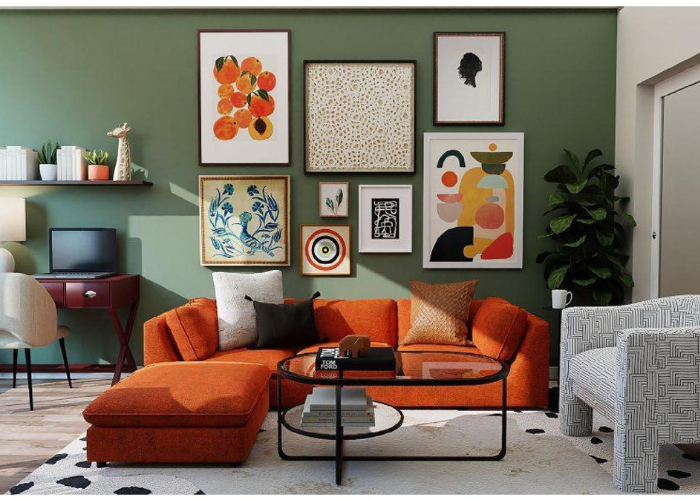
Do you want something similar?
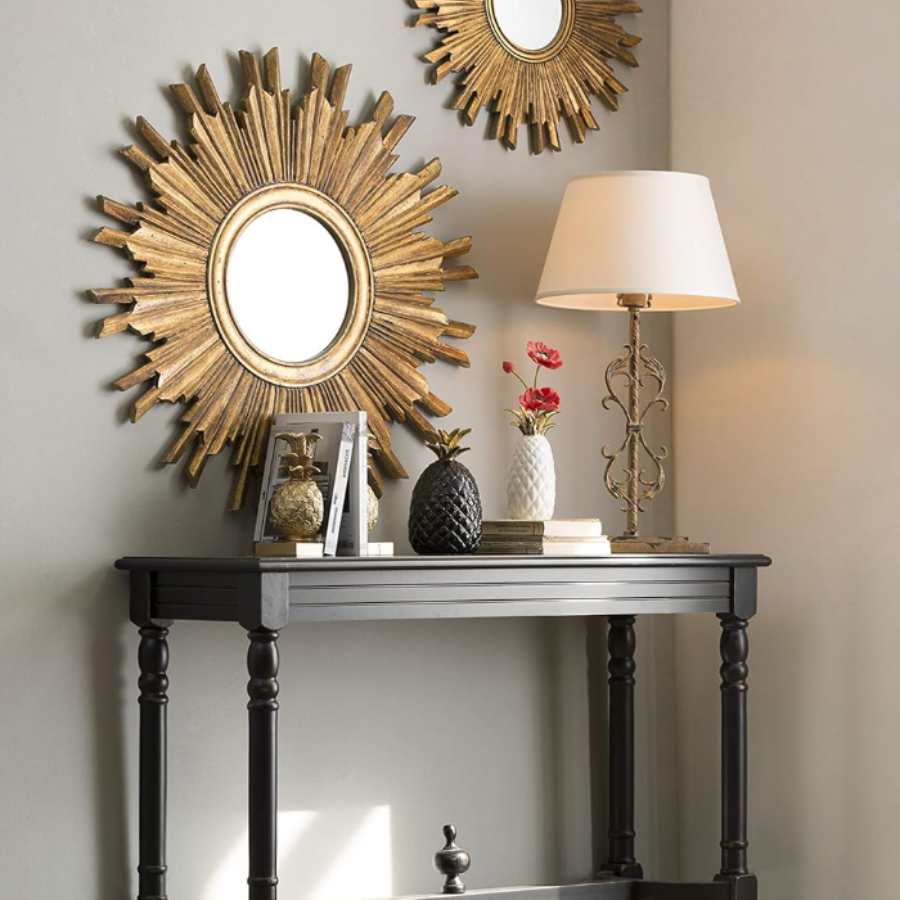
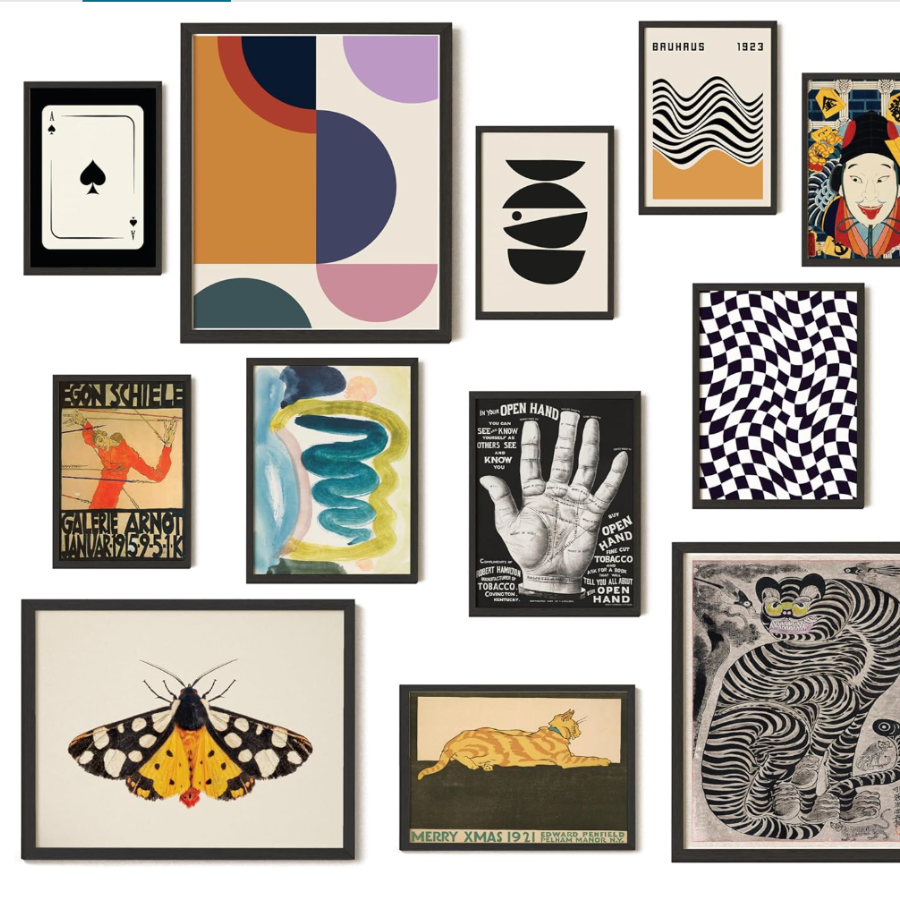
Eclectic interior design is characterized by a diverse range of styles, influences, and periods, resulting in a unique and personalized look. The thoughtful combination of various elements is the key to achieving an eclectic style.
From this interior design style guide are some elements commonly used to create an eclectic interior:
Mix of Furniture Styles:
- Incorporate furniture pieces from different eras and styles.
- Pairing a modern sofa with a vintage coffee table or combining antique chairs with contemporary furnishings creates visual interest.
Varied Textures and Materials:
- Use a mix of textures and materials, such as wood, metal, glass, leather, and fabric.
- Combining diverse textures adds depth and dimension to the space.
Bold Colors and Patterns:
- Embrace a diverse color palette and experiment with bold patterns.
- Mix and match colors and patterns in upholstery, throw pillows, rugs, and wall coverings.
Artwork and Wall Decor:
- Display a diverse collection of artwork, including paintings, prints, and sculptures.
- Mix different styles and mediums to create an eclectic gallery wall.
- See my post on how to create a gallery wall.
Unique Lighting Fixtures:
- Choose distinctive lighting fixtures that stand out.
- Mixing styles like industrial pendant lights, vintage chandeliers, and contemporary floor lamps can add eclectic flair.
Mismatched Accessories:
- Incorporate a variety of accessories, such as vases, decorative bowls, and figurines. These can come from different styles and periods, contributing to the eclectic mix.
Vintage and Antique Finds:
- Incorporate vintage or antique pieces into the decor.
- These items can add character and history to the space, contributing to the eclectic aesthetic.
Layered Rugs and Textiles:
- Layering rugs of different patterns and textures adds visual interest to the floor.
- Mixing throw blankets and cushions in various fabrics enhances the eclectic feel.
DIY and Upcycled Elements:
- Integrate handmade or upcycled items into the design.
- DIY projects or repurposed furniture pieces can contribute to the eclectic, one-of-a-kind look.
Unexpected Color Combinations:
- Experiment with unexpected color combinations that might not typically go together.
- Eclectic interiors often celebrate the freedom to mix and match colors in unconventional ways.
Mix of Patterns and Textiles:
- Combine patterns, such as stripes, florals, and geometric prints.
- Mixing different textiles like silk, cotton, and wool adds a tactile and eclectic quality to the space.
Personalized Collections:
- Showcase personal collections, vintage cameras, vinyl records, or travel souvenirs.
- These collections add a unique and personal touch to the eclectic style.
You can also purchase at:
- World Market
- West Elm
- Etsy
Art Deco/Glam Design Style
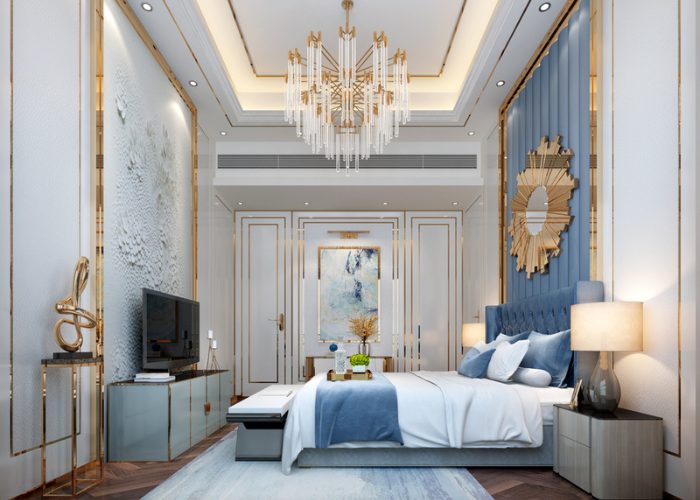
Would you like to explore other Glam accessories?
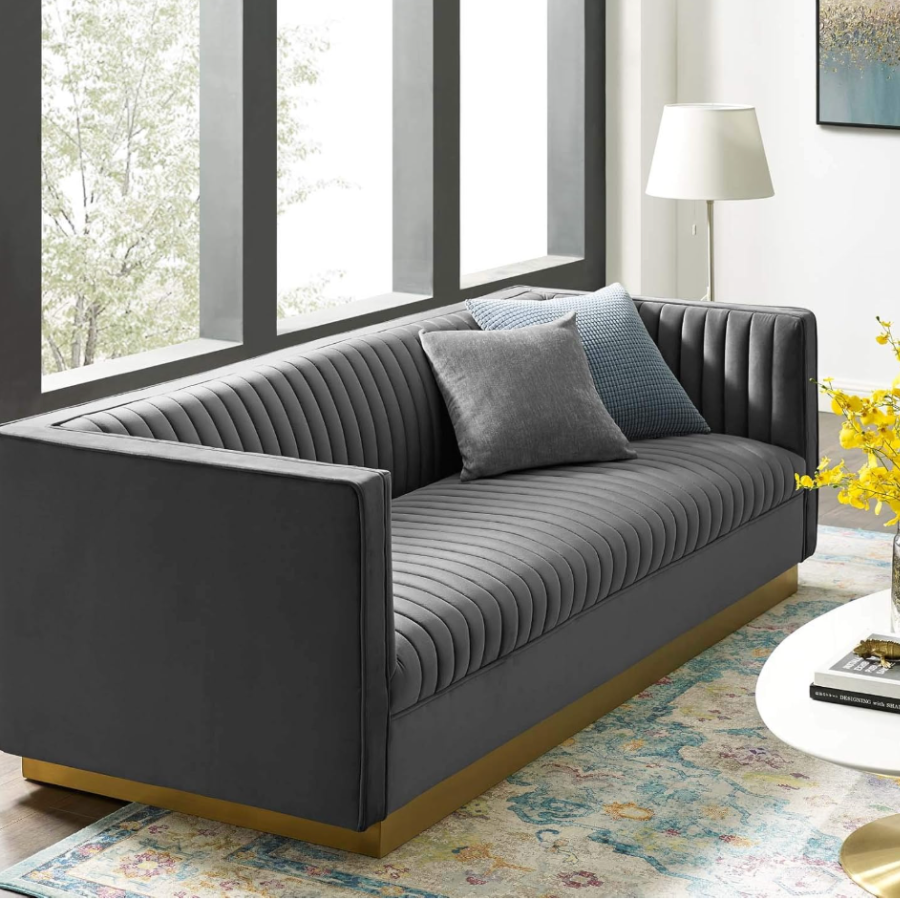
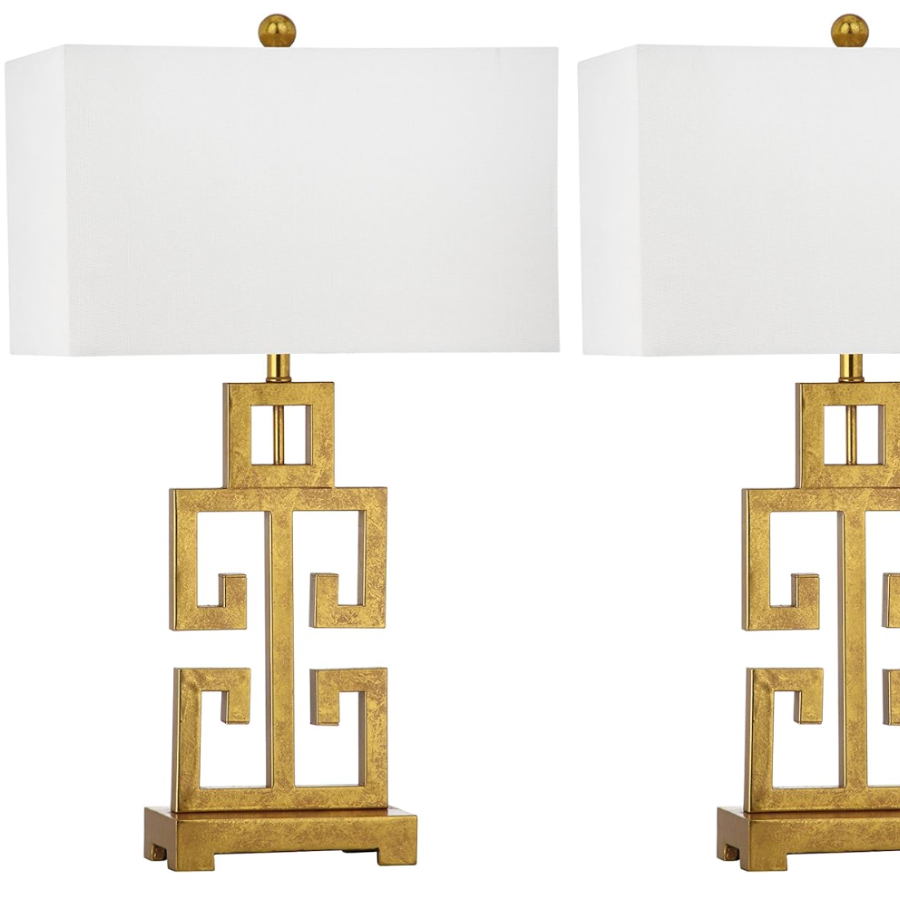
Art Deco interior design is characterized by a bold and glamorous aesthetic that emerged in the early 20th century, particularly during the 1920s and 1930s. This style is known for its emphasis on luxury, geometric shapes, and rich materials.
From this interior design style guide, there are some key elements used to create an Art Deco interior design:
Geometry and Symmetry:
- Art Deco relies heavily on geometric shapes, such as zigzags, chevrons, and stepped patterns.
- Symmetry is a fundamental aspect of Art Deco design, creating a sense of balance and order in the space.
Rich Materials:
- Luxurious and exotic materials are essential in Art Deco interiors.
- These include lacquer, chrome, glass, mirrors, inlaid wood, marble, and precious metals.
Bold Colors:
- The color palette is typically bold and vibrant, featuring high-contrast combinations.
- Popular colors include black, white, gold, silver, and jewel tones like emerald green, sapphire blue, and ruby red.
Streamlined and Elegant Furniture:
- Clean lines, smooth surfaces, and a sense of sophistication often characterize furniture in Art Deco interiors.
- Common furniture pieces include sleek sofas, club chairs, lacquered furniture, and mirrored or glass surfaces.
Decorative Patterns:
- Geometric patterns, including chevrons, zigzags, and stylized floral motifs, are common in Art Deco design.
- Exotic influences, such as Egyptian and African motifs, are also incorporated into the decorative elements.
Mirrors and Reflective Surfaces:
- Mirrored surfaces and reflective materials, like chrome and glass, are frequently used to enhance the sense of luxury and add a touch of glamour.
Bold Artwork:
- Art Deco interiors often feature bold and stylized artwork, including paintings, sculptures, and murals.
- The art may showcase the streamlined, geometric aesthetic of the overall design.
Marquetry and Inlay:
- Intricate patterns and designs created through marquetry (decorative wood inlay) are common in Art Deco furniture and decor.
Luxurious Fabrics:
- Fabrics used in Art Deco interiors are rich and sumptuous. Velvet, satin, and leather are popular choices, often featuring bold colors and geometric patterns.
Tropical and Exotic Influences:
- Some Art Deco designs incorporate elements inspired by exotic cultures, such as palm leaves, animal prints, and motifs from Africa and Egypt.
You can also purchase at:
- Wayfair
- West Elm
- Crate & Barrel
Transitional Design Style
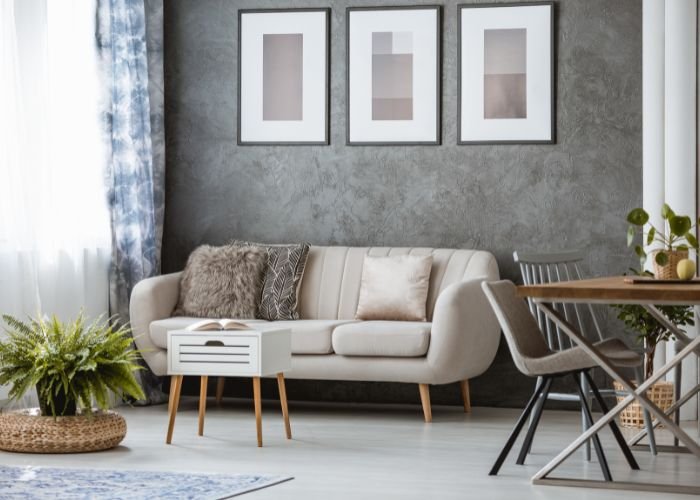
Would you like to explore other accessories?
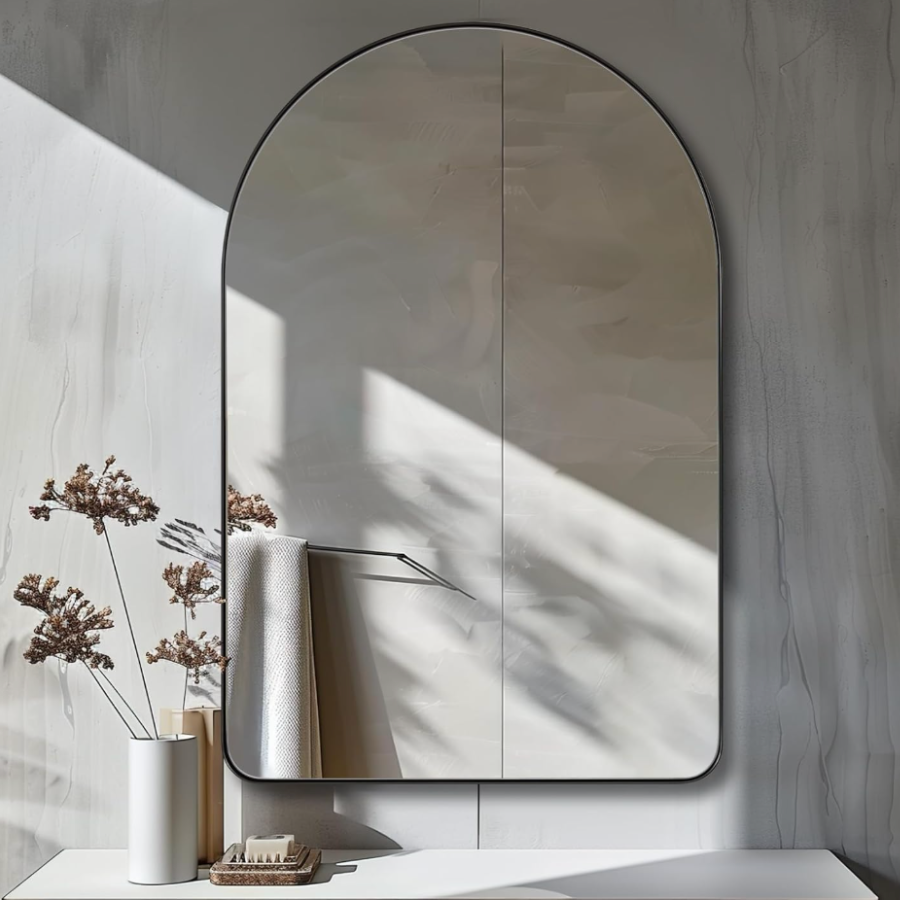
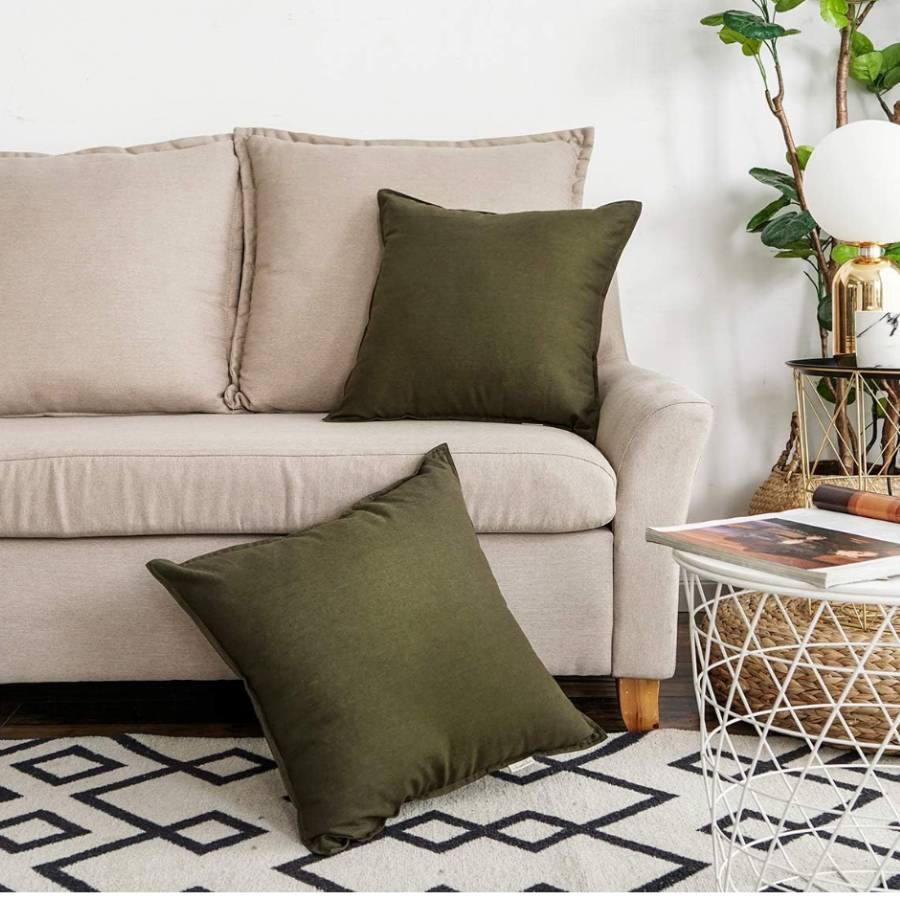
Transitional interior design is a balanced blend of traditional and contemporary styles, combining elements to create a timeless and harmonious aesthetic. The goal is to achieve a comfortable and welcoming space that avoids extremes.
Additionally, from the interior design style guide, there are key elements used to create a transitional interior design style:
Neutral Color Palette:
- Use a neutral color palette with warm tones, such as beige, taupe, and gray, providing a versatile backdrop and helping create a calming atmosphere.
Subtle Patterns:
- Incorporate subtle and understated patterns. Transitional interiors often feature geometric patterns or tone-on-tone designs that add visual interest without being too bold.
Mix of Materials:
- Integrate a mix of materials, combining both traditional and contemporary choices. For example, you might pair a classic wooden table with modern metal or acrylic chairs.
Comfortable and Functional Furniture:
- Choose comfortable and functional furniture with clean lines. Avoid overly ornate or overly streamlined pieces.
- Upholstered furniture tends to be plush and inviting.
Balance of Styles:
- Achieve a balance between traditional and contemporary styles.
- For instance, you might pair a classic sofa with more modern accent chairs or mix traditional architectural details with contemporary furnishings.
Softened Edges:
- Transitional design often features softened edges and curves.
- Furniture and architectural elements may have gentle curves that create a sense of warmth and comfort.
Limited Use of Decorative Accessories:
- Keep the use of decorative accessories moderate.
- Avoid excessive home decor accessories and focus on a curated selection of meaningful and well-chosen items.
Textured Fabrics:
- Incorporate textured fabrics for added warmth and interest.
- Soft textures like chenille or linen can be combined with smooth and sleek materials to achieve a balanced look.
Simple Window Treatments:
- Use classic and straightforward window treatments that enhance the natural light.
- Neutral drapes, Roman shades, or wooden blinds are common choices.
Versatile Lighting:
- Choose versatile lighting fixtures that blend traditional and contemporary elements.
- Transitional interiors often feature chandeliers with clean lines, pendant lights, or table lamps with neutral shades.
Artwork with Broad Appeal:
- Select artwork that has broad appeal and can bridge the gap between traditional and contemporary styles.
- Landscape paintings, abstract art, or photography are popular choices.
Neutral Area Rugs:
- Use neutral area rugs that complement the color scheme and add a layer of softness.
- Transitional interiors often feature rugs with subtle patterns or textures.
Open Layouts:
- Transitional interiors often embrace open layouts that create a sense of flow between home areas.
- This openness contributes to a modern and relaxed atmosphere.
Subdued Accents:
- Introduce accents in a restrained manner.
- A few carefully chosen accent pieces or pops of color can add interest without overwhelming the space.
You can also purchase at:
- Wayfair
- West Elm
- Hernest
- CB2
Coastal Design Style
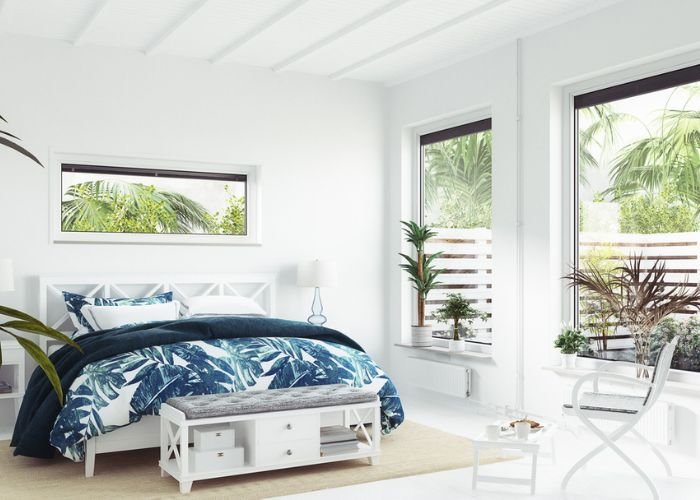
Would you like to explore other coastal accessories for your space?
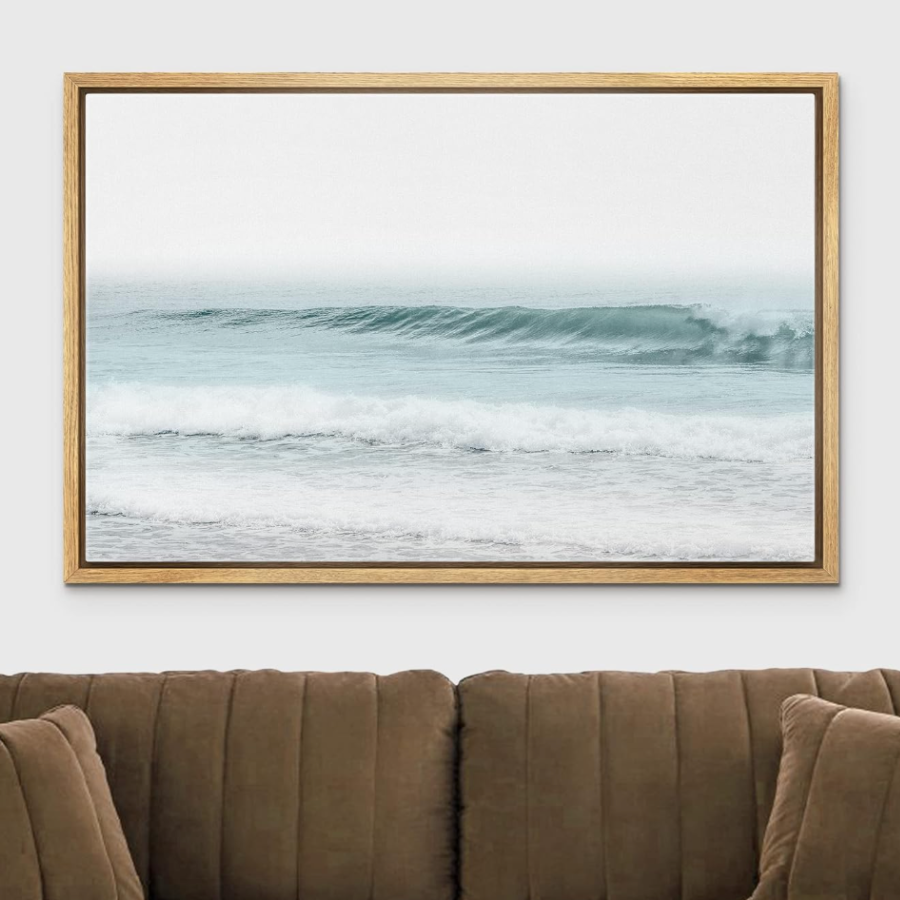
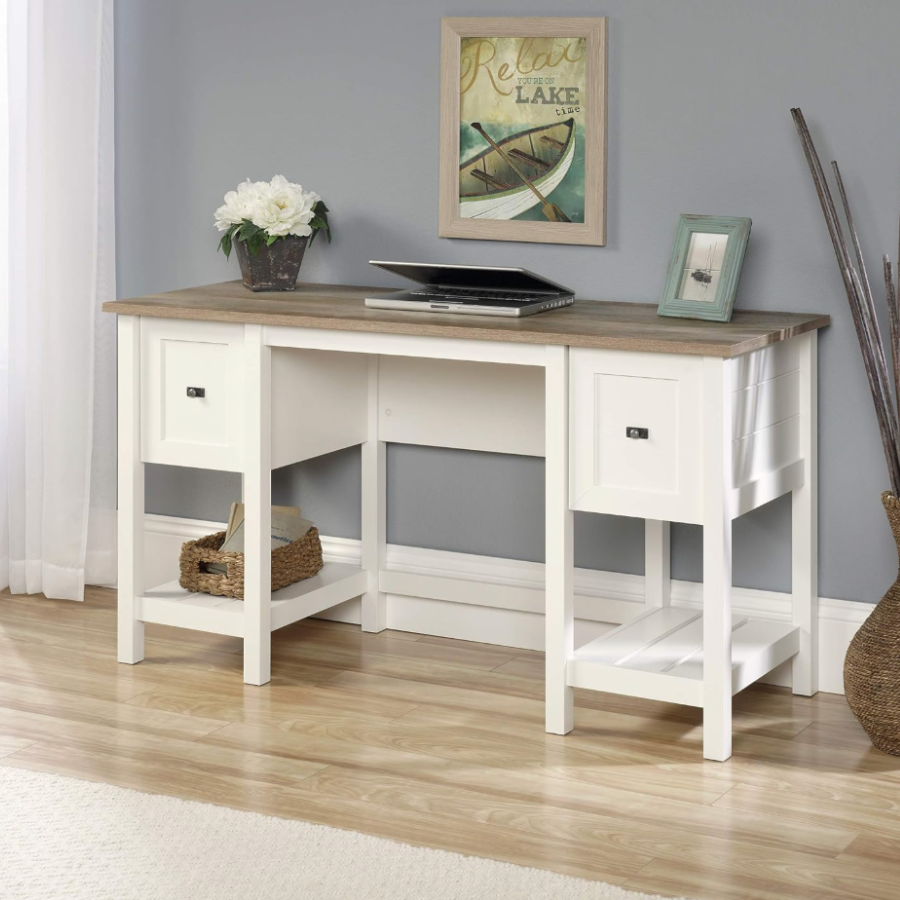
A coastal interior design style, also known as coastal or beach style, draws inspiration from the relaxed and breezy atmosphere of coastal living. It often incorporates natural elements, light colors, and a casual, comfortable vibe.
In the interior design style guide are critical characteristics used to create a coastal interior design style:
Light and Airy Color Palette:
- Use a light and airy color palette that reflects the coastal environment.
- Whites, soft blues, sandy beiges, and seafoam greens are common choices.
- These colors create a sense of openness and tranquility.
Natural Materials:
- Incorporate natural materials that evoke the beach and ocean.
- Examples include rattan, bamboo, jute, driftwood, and reclaimed wood.
- These materials add warmth and texture to the space.
Nautical Elements:
- Integrate nautical elements without going overboard. Stripes, especially blue and white stripes, are a classic choice.
- Nautical ropes, anchor motifs, and seashell decorations can also be used subtly and tastefully.
Casual and Comfortable Furniture:
- Choose furniture that is comfortable and inviting.
- Slip-covered sofas and chairs, often in white or light colors, create a relaxed atmosphere.
- Wicker or rattan furniture adds a touch of coastal charm.
Natural Light:
- Maximize natural light by using light and sheer window treatments.
- Allow the sunlight to flood the space, creating a bright and cheerful environment.
Seaside Accessories:
- Decorate with seaside accessories such as seashells, beach glass, and driftwood.
- Accessory items can be used sparingly as accents to evoke a coastal feel.
Ocean-Inspired Artwork:
- Hang artwork that reflects the ocean and beach scenes.
- Coastal landscapes, seascapes, and marine life artwork contribute to the theme.
Textured Fabrics:
- Use textured fabrics to add depth and interest.
- Linen, cotton, and other natural fabrics in light and breezy colors are suitable for coastal interiors.
Weathered and Distressed Finishes:
- Choose furniture with weathered or distressed finishes to evoke a sense of age and character.
- Include reclaimed wood furniture or pieces with a gently worn appearance.
Indoor-Outdoor Connection:
- Create a seamless indoor-outdoor connection using materials and decor that transition between indoor and outdoor spaces.
- This is especially effective in homes located near the coast.
Soft Area Rugs:
- Use soft area rugs that mimic the colors and textures of the beach.
- Natural fiber rugs like sisal or jute can add a coastal touch while providing a comfortable feel underfoot.
Coastal Plant Life:
- Integrate coastal plant life, such as palms, ferns, or other greenery.
- Potted plants or fresh flowers bring a touch of nature indoors.
Blue and White Color Scheme:
- Blue and white is a classic coastal design color scheme.
- It reflects the sky and sea colors, creating a fresh and timeless look.
Relaxed and Casual Vibe:
- Keep the overall atmosphere relaxed and casual.
- Coastal interiors are meant to be inviting and comfortable, reflecting the laid-back lifestyle associated with beach living.
You can also purchase at:
- World Market
- West Elm
- Crate & Barrel
- CB2
Modern Contemporary Design Style
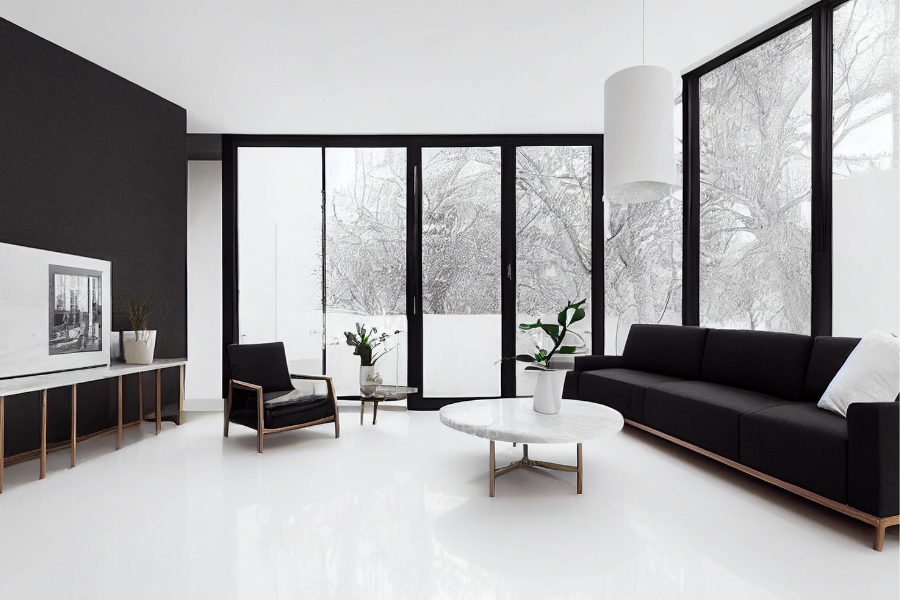
Would you like to explore other modern decor furniture and accessories?
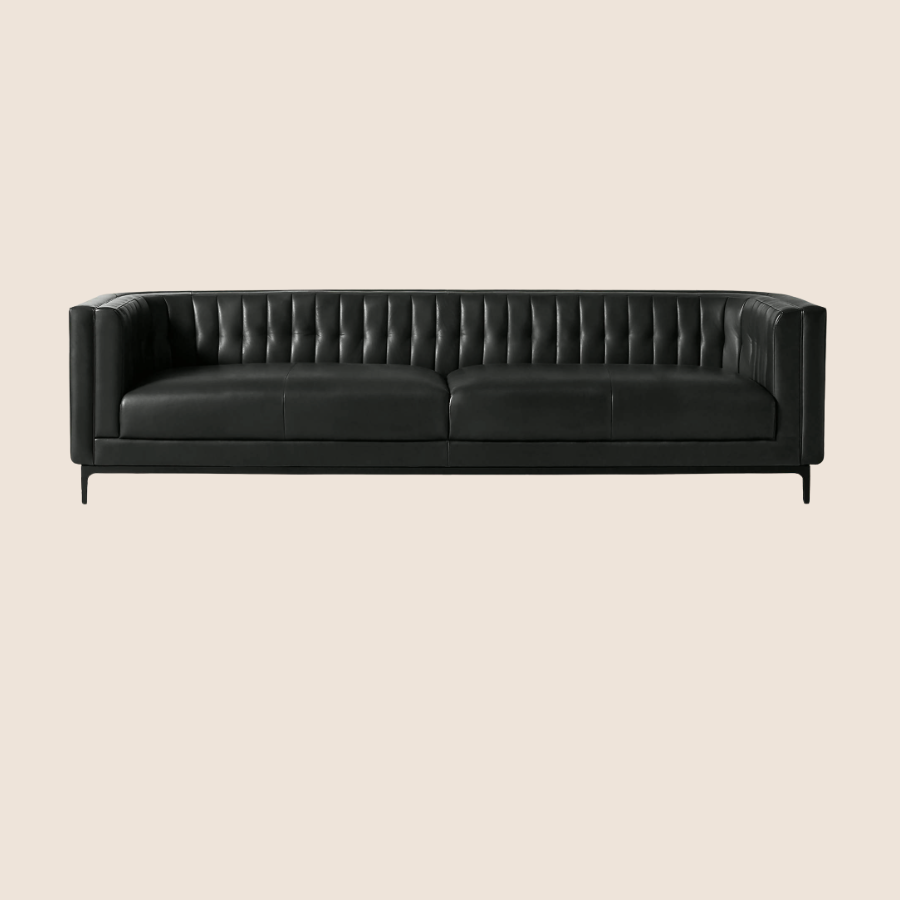
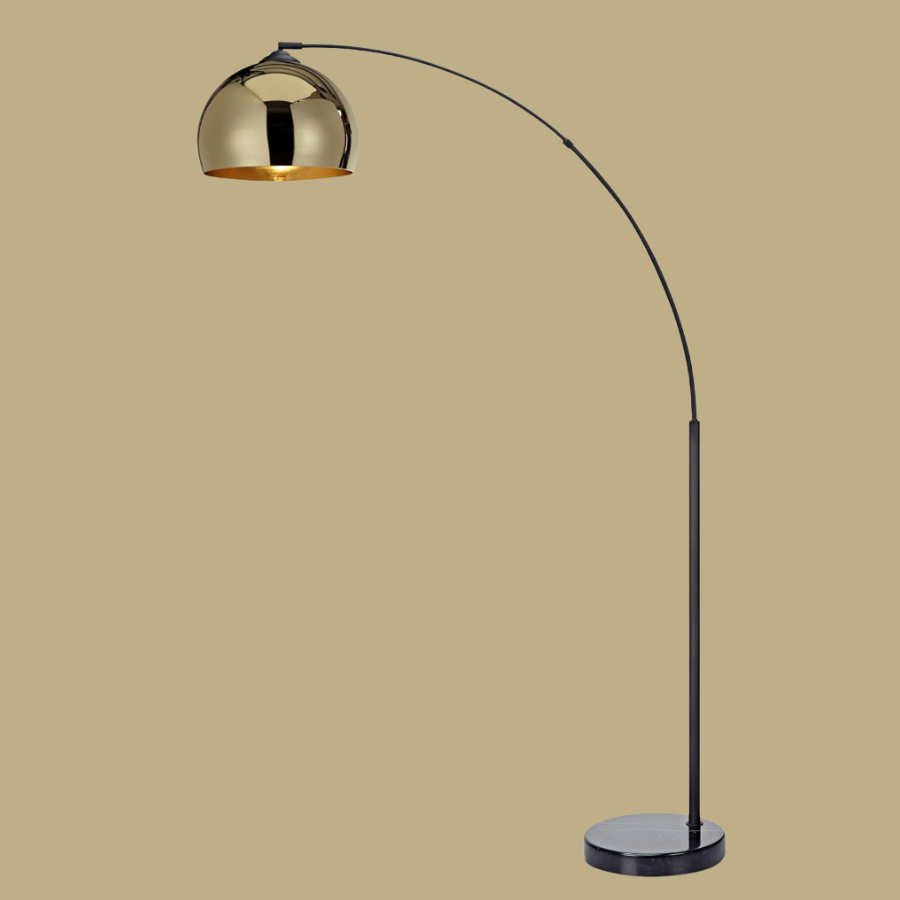
Modern contemporary interior design is characterized by clean lines, a focus on functionality, and a sleek, sophisticated aesthetic. It often incorporates the use of new materials, technology, and innovative design concepts.
Here are key elements used to create a modern, contemporary interior design style:
Clean Lines:
- Straight, clean lines are a hallmark of modern contemporary design.
- Furniture, architectural elements, and decorative pieces often feature crisp edges and a streamlined appearance.
Open Floor Plans:
- Modern contemporary interiors often embrace open floor plans, creating a sense of spaciousness and fluidity between different home areas.
Neutral Color Palette:
- Neutral colors, such as whites, grays, and beige, are prevalent in contemporary modern design.
- These tones create a calm, uncluttered backdrop, allowing other elements to stand out.
Bold Accents:
- While neutrals dominate the color palette, pops of bold, vibrant colors are often used as accents.
- These can be introduced through accessories, artwork, or statement furniture.
Large Windows and Natural Light:
- Ample natural light is crucial in modern, contemporary interiors.
- Large windows, glass doors, and skylights are standard features that enhance the connection between indoor and outdoor spaces.
Metallic Finishes:
- Stainless steel, chrome, and other metallic finishes are frequently used in modern contemporary design.
- These finishes add a touch of sophistication and a sleek, polished look.
Minimalist Furniture:
- Furniture in modern, contemporary design is often minimalistic and functional.
- Clean-lined sofas, low-profile chairs, and simple tables contribute to the streamlined look.
Geometric Shapes:
- Geometric shapes are a common design element.
- Clean and angular forms contribute to the modern aesthetic, from furniture to decorative accents.
Technology Integration:
- Modern contemporary interiors often integrate technology seamlessly.
- This could include hidden wiring, smart home features, and sleek entertainment systems that enhance the functionality of the space.
Statement Lighting:
- Modern contemporary interiors feature distinctive and often artistic lighting fixtures.
- Pendant lights, chandeliers, and floor lamps with sleek designs contribute to the overall aesthetic.
Artwork and Sculptures:
- Modern contemporary design often incorporates bold and abstract artwork or sculptures.
- These pieces serve as focal points and contribute to the artistic and sophisticated atmosphere.
Bold Patterns:
- While minimalism is vital, modern contemporary design may incorporate bold patterns sparingly.
- This could include geometric patterns, abstract prints, or bold stripes in rugs or accent pieces.
You can also purchase at:
- Wayfair
- West Elm
- Crate & Barrel
- CB2
French Country Interior Design Style
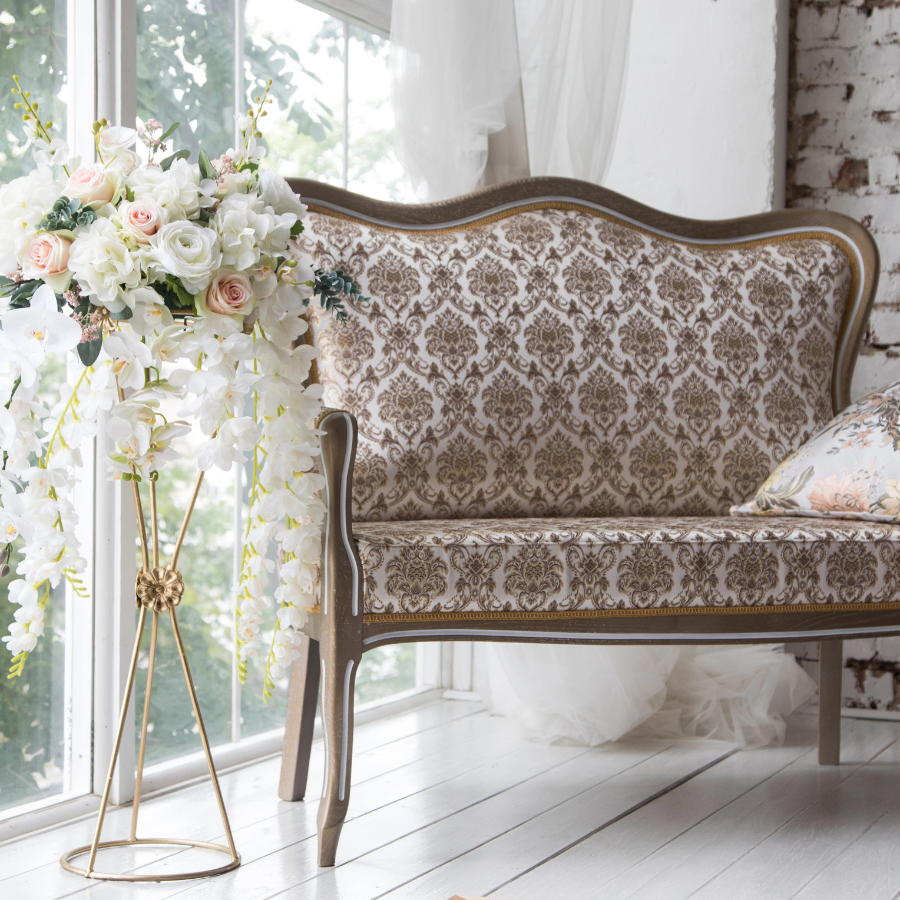
Do you want something similar?
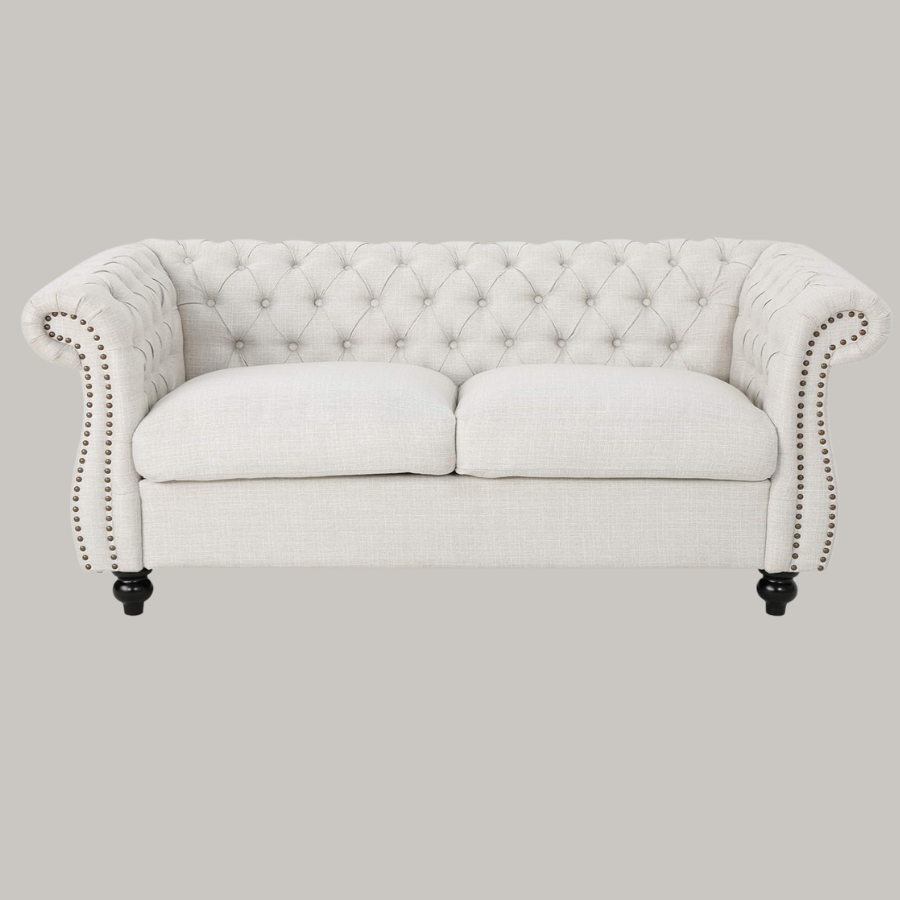
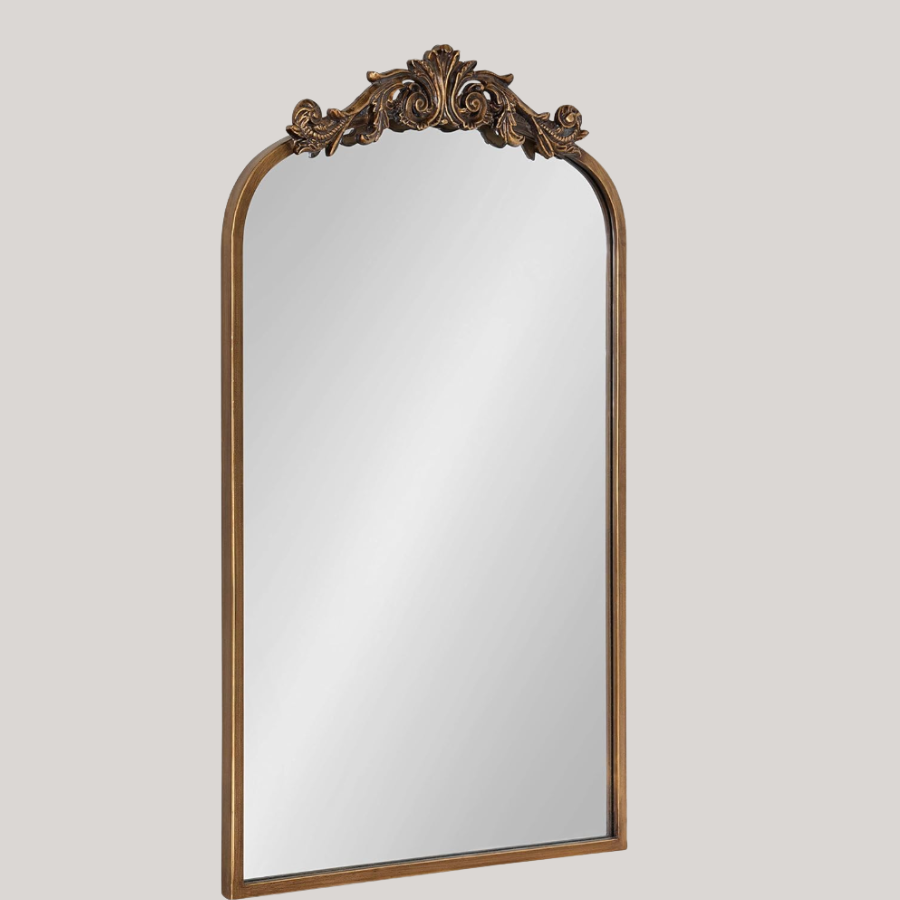
French Country interior design exudes warmth, elegance, and rustic charm inspired by the countryside homes of Provence, France. This style blends old-world beauty with comfort and subtle sophistication.
Here are key elements used to create a French Country interior design style:
Natural Materials and Textures:
- Use materials like stone, wood, and wrought iron to create an earthy, grounded feel.
- Natural textures (linen, cotton, rattan) add softness and a lived-in quality.
Muted Color Palette:
- Opt for soft, sun-washed hues such as cream, warm whites, muted blues, sage greens, and lavender.
- These colors evoke the natural French countryside and provide a tranquil backdrop.
Distressed and Vintage Furniture:
- Choose furnishings with a timeworn or antique look—curved lines, carved wood details, and whitewashed or painted finishes.
- Reclaimed or weathered pieces enhance the old-world character.
Exposed Beams and Stone Walls:
- If possible, expose original architectural elements like ceiling beams or stone accent walls.
- These add authenticity and rustic appeal to the space.
Ornate Lighting Fixtures:
- Incorporate chandeliers, wrought iron lanterns, or antique-inspired pendents.
- These lights blend elegance with rustic materials, a hallmark of French country style.
Floral and Toile Patterns:
- Soft, traditional fabrics, such as toile, stripes, or small florals, appear on upholstery, drapery, and pillows.
- These prints reflect the pastoral elegance of French country living.
Soft, Comfortable Upholstery:
- Choose overstuffed sofas and armchairs in natural fabrics.
- Slipcovers and ruffled details are common, promoting a casual yet refined feel.
Decorative Accessories:
- Add ceramic pitches, antique mirrors, copper pots, baskets, and vintage books.
- These items bring a collected and curated charm to the room.
Wood and Iron Details:
- Use rustic wood tables, distressed cabinetry, and iron hardware or curtain rods to ground the design in simplicity and tradition.
Layered Textiles:
- Incorporate layered textiles—linen table runners, embroidered cushions, and cozy throws—to soften the space and add dimension.
Artwork and Sculptures:
- Modern contemporary design often incorporates bold and abstract artwork or sculptures.
- These pieces serve as focal points and contribute to the artistic and sophisticated atmosphere.
Indoor Plants and Fresh Flowers:
- Add fresh lavender, rosemary, or wildflowers in ceramic vases.
- These accents enhance the natural, romantic essence of the style.
You can also purchase at:
- Wayfair
- Crate & Barrel
- CB2
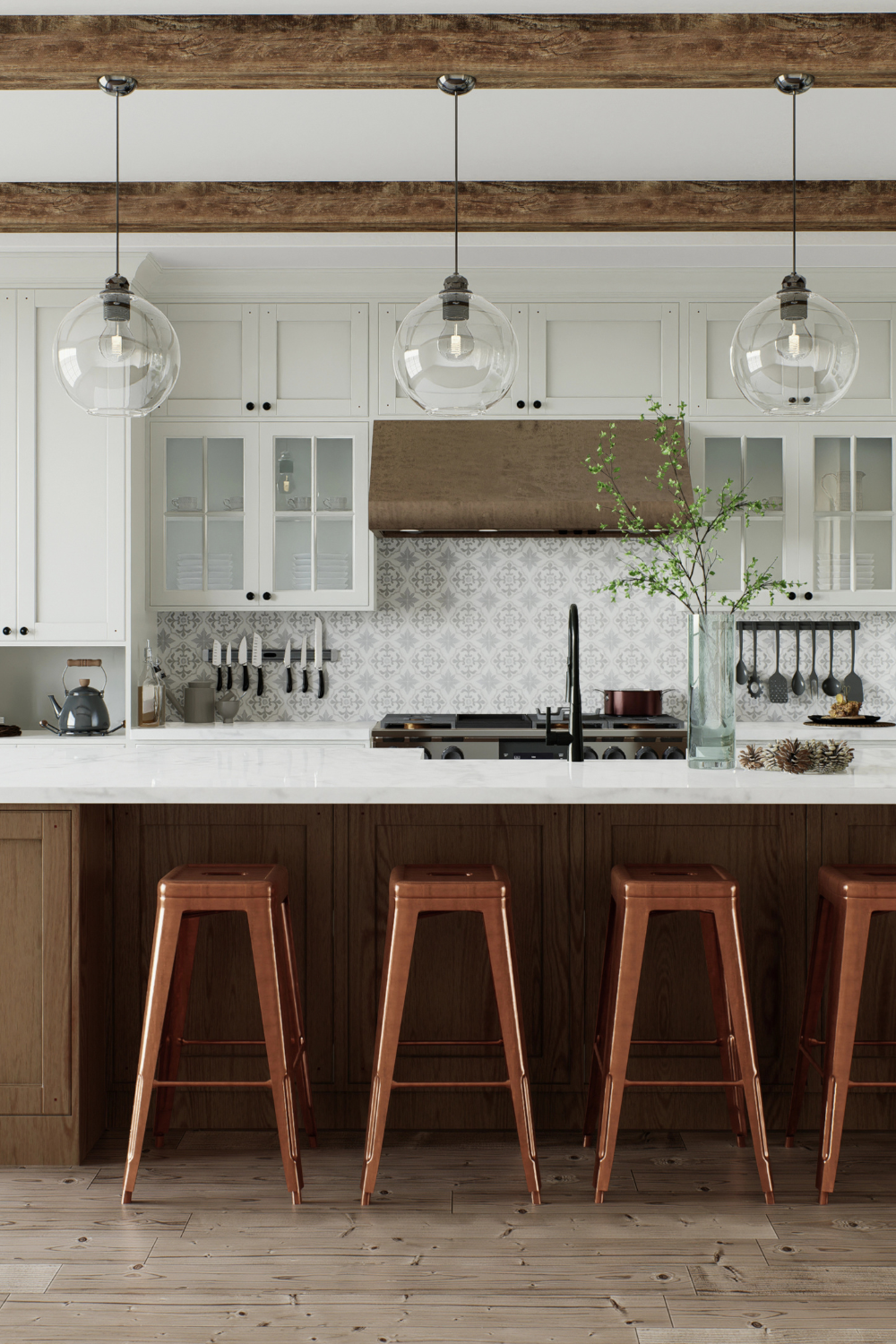
Leave a Reply